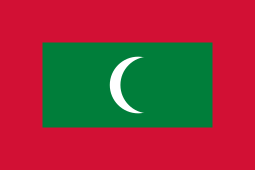
Maldives – Trackchasing Country #79

Trackchasing Country #79
Greetings from places on the way to Hulhumalé, Maldives.
Click on the links below to read about and see the photos and videos from my visit to Hulhumalé, a reclaimed island in Maldives home to some 30,000 people. ……and trackchasing country #79.
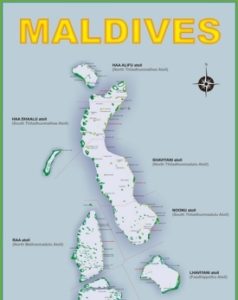
LIKE TO KNOW MORE ABOUT MALDIVES – TRACKCHASING COUNTRY #79?
As a service to my readers I always provide a top line background of each country I visit. If you’d like to learn a little more about the island nation of Maldives check out the “background” information I prepared for you. It appears at the bottom of this report. I have condensed this section so you can get a good “feel” for this country’s history that is now home to approximately 400,000 people. Most of the material comes from Wikipedia. We can trust them.
PRE-TRIP
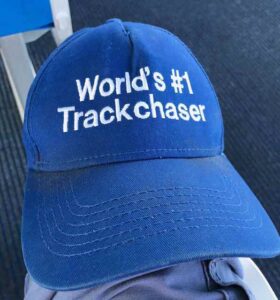
Advance Preparation
I have obviously done my share of world traveling with and without my hobby of trackchasing. I’ve had some of the most unusual experiences that a person could possibly have.
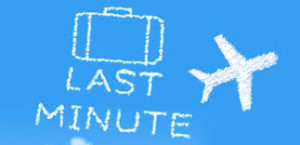
However, none of my previous trips could match up with my Maldives adventure in the “last-minute” department. I don’t suspect any future trips ever will either. Sit down, relax and I’ll tell you all about it.
Advance Preparation
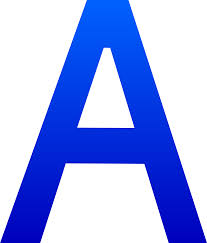
I was all set to be trackchasing this weekend in what I will call “country A”. Remember there are 195 countries in the world. Some might dispute that number as there are a few sources on the subject. That doesn’t much matter to me. I’ll go with my source.
Up to this point I have seen racing in 78 of those 195 countries. There are only ten or twelve countries, maybe less, that have racing where I had not visited. Because the hobby of trackchasing is ultra-competitive I cannot identify “country A”. Sorry, I just can’t.
There was some uncertainty as to whether or not the race would actually come off in country A. Weather might be an issue. Political problems could stop the event. Nevertheless, I had some great on the ground sources who were keeping me posted by the minute.

Then just four of five days ago the Randy Lewis Racing research department found racing in a new country. Of course, no other trackchaser had ever seen racing in this location. I would bet a dollar to a donut that no other trackchaser had ever set foot in this country. Most had never even heard of it. This location became “country B”.
Country A was my first choice. Why? I had been working on that trip and developing relationships for weeks. I had made commitments to people. I didn’t want to lose that trip. Yes, I was committed to those folks….as long as they were having a race.

However, it always pays to have a backup plan in life. Country B was the backup plan. Maybe you know where I’m going with this. Less than 24 hours before I was set to take off I got a few messages from my contacts in country A. There were political problems. The race was cancelled and re-scheduled for April. Dang!
That put country B into the spotlight. I should mention that this weekend’s country B would have been country A for a trip later this year. They just moved up in my schedule a little quicker than originally planned.
My contact there was all for a visit from the World’s #1 Trackchaser. I was up for the adventure as well. However, there was some uncertainty about their race as well. They needed approval from local civic leaders and sometimes the civic support changed at the last minute.
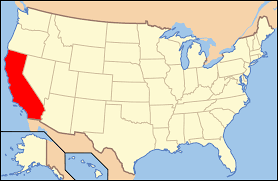
If country B, which was plan B backed out, then I would likely go to plan C, a domestic trip from my home state of California. I waited. I waited to hear from my contact in country B. I didn’t get that message until nine hours and thirty minutes before the flight I would need to take was leaving Los Angeles. I guess that’s “last minute”!
So what country is “country B”? It’s the Republic of Maldives. Without Googling the information can anyone tell me where Maldives is even located? Anyone? Read along and I’ll tell you the answer to that question and a lot more. When you’re done you’ll feel like you went on the trip.
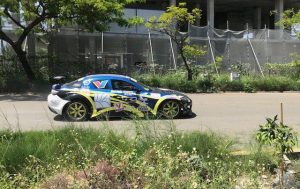
THE RACE
The folks down in Maldives race on a street course. The track is called the Hulhumalé Racing Track. Being a street course, they race on city streets. In order to do that they must get approval from the city. They don’t get much lead-time for when the next race will be. Even when the next race is scheduled it can be cancelled on a moment’s notice if something more important, according to the city, comes up.
The Randy Lewis Racing research department uses some proprietary methods to find these “hidden” racetracks. Folks who track racing activity all over the world don’t even have a listing for Maldives! Because RLRRD methods are “proprietary” I can’t tell you how this group does it. However, no one can argue with the results.
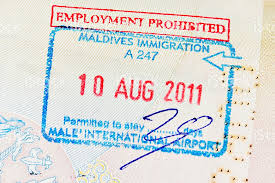
THE VISA
Some countries require visas for U.S. visitors and some do not. The more “foreign” the country the more likely that I would need a visa. I didn’t know much about the Republic of Maldives (I’ll call it “Maldives” from this point forward) but it seemed pretty foreign to me. By the way, Maldives rhymes with “Steve” and not “dive”.
I’m not sure I had ever heard of the country. They only have about 400,000 residents. Maldives is a 100% Muslim country. Nevertheless, there was no advance visa required. When I arrived into the country I would be able to get an entry visa.
TIME ZONES
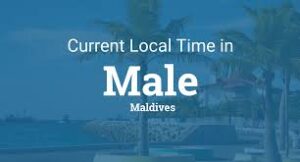
Hulhumalé, Maldives, sits in the MVT time zone. That’s the Maldives time zone. How cool is it to have your own time zone! They do not use Daylight Saving Time. The MVT time zone is 12 hours ahead of the Pacific time zone where I live.
In my opinion a 12-hour time change is the absolute worst for creature comfort. Obviously, by example, when it’s 2 a.m. in Los Angeles it’s 2 p.m. in Male.
Let’s say I was visiting somewhere that was 18 hours of ahead of my time zone. One might think an 18-hour time change is worse than a 12-hour time change. However, with an 18-hour change the time is actually closer to back home than the result of a 12-hour time change. Again by example when it’s 2 p.m. in Los Angeles it is 8 a.m. in the 18-hour ahead location. The time of 8 a.m. is twice as close to 2 p.m. as 2 a.m. is. This is a case of less being more. An 18-hour time change brings less disruption than a 12-hour time change!
BOOTS ON THE GROUND
I can’t thank the people who help me with these foreign trips enough. With modern technology, including state of the art electronic translators, I can “reach out” to my new foreign friends much easier than even 10 years ago when I was visiting five or more new countries each year.
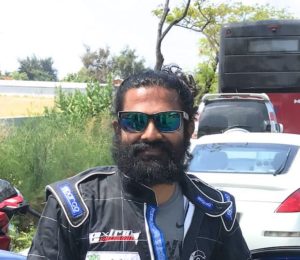
My main Maldivian contact would be a young man named, “Mohamed”. I only “met” Mohamed about five days ago. Since that time, we had exchanged nearly 100 messages. Without the help from him I would not be making this trip. Mohamed was the direct link between Maldives and me.
THE TRANSPORTATION
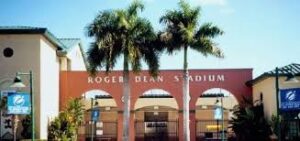
How was I going to get to Maldives? That was a good question. I left for Male, the capitol of Maldives at 11:45 a.m. on a Tuesday morning. Just yesterday at 3 p.m. I was sitting inside the Roger Dean Chevrolet baseball park in Jupiter, Florida! Yep. Less than 24 hours ago I was in Florida watching a baseball game.
While I was at the game messages began to pour in from my contacts in country A. Their race had been cancelled! I shared that new news with Mohamed over in Maldives. He liked what he was hearing but soon realized that the plans we had talked about for my visiting Maldives might be affected by the late notice. I’m sure the old timers sitting around me at the ball game wondered what was so interesting that I had to be on my phone so much during the game.
I would be buying an airline ticket for this trip. International trackchasing is a big deal. It’s very difficult to use my airline sponsorship program for these trips. I can’t afford the uncertainty, even though I have a great track record with my sponsors. There was no way I could risk not getting to an international race on time.
Most of the time you’re not going to get the best deals for long distance flying on short notice. My phone is my sidekick. I get a lot done with that thing. I checked potential departure points that would get me to the Velana International Airport (MLE) in Male, Maldives.
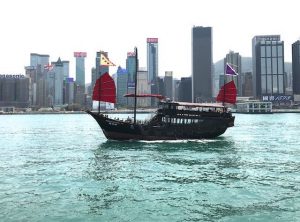
I could leave from Miami and connect in Istanbul, Turkey. If I left from New York I would connect in Abu Dabi, United Arab Emirates. I liked the itinerary best that was leaving from Los Angeles. If I flew out of LAX I would connect in Hong Kong, China. The layover in Hong Kong (above) was nearly 24 hours. That was be great. I could almost get two trips in one, with a day to tour Hong Kong, a city I have visited a couple of times in the past with Carol.
You will come to find out I chose the Los Angeles to Hong Kong to Male, Maldives option. I would fly on Hong Kong Airlines. I couldn’t recall ever doing that. It wouldn’t be easy though. I’ll tell you about it below.
This trip would have me flying for about 22 hours….each way. The flight miles would exceed 20,000 miles. This is what the flight travel itinerary looked like.
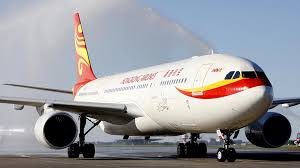
Los Angeles, California – Hong Kong, China – 15H35M
Hong Kong, China – Male, Maldives – 7H10M
Male, Maldives – Hong Kong, China – 6H50M
Hong Kong, China – Los Angeles, California – 13H25M
I would be gone from home for seven days and six nights. The above flight schedule would cover 20,472 miles. That didn’t even count the nearly 3,000 miles I flew from Orlando to Los Angeles so I could officially start the trip to Maldives. That might seem like a lot until you consider that my total travel mileage (rental car and airlines) in any given year is 200,000-250,000 miles. In less that the first three months of 2018 I have traveled nearly 72,000 miles.
CURRENCY
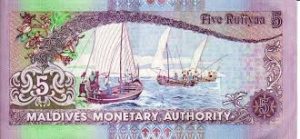
Carol is my international currency dealer. However, she couldn’t help me with Maldives’ currency. She didn’t have any Maldivian Rufiyaa. I would have to get those in country if I had to get them at all.
I did know this about the currency. I knew that one U.S. dollar would buy me 15.46 Maldivian Rufiyaa. I had a good supply of euros and U.S. dollars. My main plan was to use credit cards as much as I could. Cash, in any of these currencies would be plan B.
WEATHER

It’s March and it’s hot in Maldives. The country is close to the equator, just 289 miles north. The high temperature each day would be nearly 90 degrees Fahrenheit. It would “cool off” at night to about 85!
There wasn’t much rain in the advance forecast. However, if it did rain that might cause a problem for the race. I could only hope. The entire Maldivian weather picture was a lot different from my trackchasing trip a month ago in Belarus. It was only seven degrees on race day there.
OVERNIGHT ACCOMMODATIONS
I mentioned I would be gone for six nights. The first night would have me flying overnight on Hong Kong Airlines. I left LAX at 11:45 a.m. The flight would take about 15 hours. I would lose 15 hours with the time change to China. What did that all mean? It meant that I left at about noon on Tuesday and got into Hong Kong at 6 p.m. at night in Hong Kong on Wednesday. Time flies huh.

This trip came up so fast I didn’t have time to set up any advance hotels or even check things out. I figured that once I landed in Hong Kong at 6 p.m. I would use my AT&T International Calling plan to help me find a hotel. I would try to use Priceline if I could. This is the classic definition of “winging” it.
I would be in Maldives for four nights. When I first started talking with Mohamed he told me he could set up a stay for me in a really nice “guest house resort”. Wow! That would be great. However, when the trip was finalized on about 10 hours advanced notice he told me it might be too late to reserve the resort or maybe even the guest house.
I did know this. Mohamed would meet me at the airport when I landed at 10 p.m. on Thursday night. It would be later than that after I cleared customs and picked up my one checked bag.

When was the last time you flew more than 11,000 miles, landed at nearly midnight, were met by a person you had never seen before and DIDN’T have a hotel reservation? One of the reasons I like doing things this way is for the adventure. This must be adventuresome travel if you’ve never met anyone who does it this way right?
THE RENTAL CAR
No rental car for me on this trip. I figured I would bum a ride with Mohamed around the Maldives and just generally play it by ear. Like I say I had never executed a trip on such short notice. Lots of things would be done by playing it by ear.
NAVIGATION
I wasn’t driving. I didn’t need any navigation help. I would see what I could see and hope that others knew their way around.
THE TRAVELING COMPANION

I don’t want you to get the wrong impression. I don’t exclude Carol from any trip I take. It’s just that I take a LOT of trips. Carol is more of a home body. My secret goal for her travel is to get Trackchasing’s First Mother (yes, that’s Carol) on the road overnight for 80-100 nights a year. Now I don’t want you to TELL her that. We’ll just keep that between you and me O.K.? Since she doesn’t read my reports I can share stuff like that without fear of her finding out what my secret goals for her are right?
It’s now late March. I have added 17 tracks in 2018 to my lifetime totals. Carol has added just three. You might get the impression that Carol stays at home while I’m always out on the road. That would be incorrect.
Carol does get invited on every trip. I don’t know what I would do if she accepted each invitation! However, I don’t think I have to worry about that.
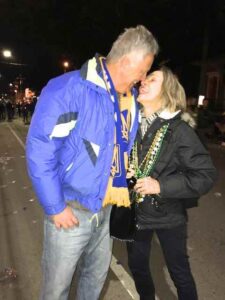
In the last ten weeks Carol has already spent nearly a week in New Orleans with me celebrating our wedding anniversary. A couple of days ago we got back from an eight-night Western Caribbean cruise. In another 10 days or so we’ll go together for our annual spring trip to Maui, Hawaii. By mid-April she will have spent 22 days on the road. I’ve got her in perfect position to reach her travel goal for 2018. Remember, we’ll just keep this “goal stuff” between you and me.
Carol is looking forward to some international trackchasing soon. She has seen racing in 42 countries. That gives her a third-place ranking in the “total trackchasing countries” category. She is starting to reel in Belgium’s Roland Vanden Eynde and his 52 trackchasing countries.

So, no Carol on this trip. I did set her up for a four-day trip to Denver to visit her mother while I’m gone on this trip. Once she gets to Colorado she’ll use Uber exclusively to get around. How many single ladies can do that?
THE SUMMARY
The plan was in place. It came together quickly. This entire adventure isn’t all that much different than a good friend calling you and inviting you to the game that starts in two hours. She’ll be over to pick you up in 30 minutes. Those spur of the moment trips work and so do the ones that are planned far in advance. I really can go either way.
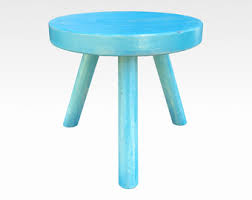
If I accomplish three things on this trip I’ll be happy. It is the race that brings me to these countries. Yes, I want to see a race. I’ll want to see new things as well. That’s not hard to do. If I haven’t been to a country everything I see is new! Finally, I’ll want to meet new friends. I can be a pretty outgoing guy. I learned to do that by being in sales for most of my career. I’m looking forward to meeting Mohamed and other Maldivian natives. I’ll do my best to make this a memorable trip.

My “world map” has filled up surprisingly quickly. However, there are “agents” working as you read this on new trackchasing countries to visit. I appreciate every one of their contributions. Here’s where I’ve been so far.
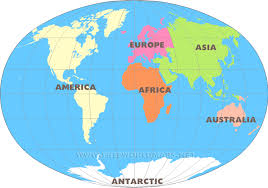
RLR – Randy Lewis Racing Lifetime Trackchasing Countries
# 1 – UNITED STATES OF AMERICA – Peoria Speedway – Mt. Hawley (oval) – Track #1, Peoria, Illinois – circa 1955
# 2 – CANADA – Cayuga Speedway (oval) – Track #174, Nelles Corner, Ontario – 1988
# 3 – AUSTRALIA – Parramatta City Raceway (oval) – Track #180, Granville, New South Wales – 1989
# 4 – UNITED KINGDOM – Northhampton International Raceway (oval) – Track #378, Northhampton – 1999
# 5 – NETHERLANDS – Driesum Racetrack (oval) – Track #839, Driesum – 2005
# 6 – BELGIUM – Bellekouter oval (oval) – Track #841, Affligem – 2005
# 7 – FRANCE – Circuit de Croix en Ternois (road course) – Track #843, Saint-Pol sur-Ternoise – 2005
# 8 – GERMANY – Nurburgring (road course) – Track #844, Nurburg – 2005
# 9 – NEW ZEALAND – Western Springs Speedway (oval) – Track #1,134, Western Springs – 2006
# 10 – MEXICO – Triovalo Bernardo Obregon (oval) – Track #1,281, Tiajamulco de Zuniga, Jalisco – 2007
# 11 – BARBADOS – Bushy Park Racing Circuit (road course) – Track #1,296, Bushy Park – 2007
# 12 – THAILAND – Bira Circuit (road course) – Track #1,300, Pattaya – 2008
# 13 – SOUTH AFRICA – Durban Grand Prix (road course) – Track #1,315, Durban, KwaZulu-Natal – 2008
# 14 – JAMAICA – Dover Raceway (road course) – Track #1,322, Brown’s Town St. Ann – 2008
# 15 – SWEDEN – Sturup Raceway (road course) – Track #1,335, Malmo – 2008
# 16 – DENMARK – Ring Djursland (road course) – Track #1,336, Tirstrup – 2008
# 17 – CZECH REPUBLIC – Automotodrome BRNO (road course) – Track #1,381, Brno – 2008
# 18 – AUSTRIA – Lambrechten Stock Car Track (road course) – Track #1,382, Lambrechten – 2008
# 19 – IRELAND – Tipperary International Raceway (oval) – Track #1,388, Rosegreen – 2008
# 20 – GUYANA – South Dakota Circuit (road course) – Track #1,390, Timehri – 2008
# 21 – CHINA – The Guia Circuit (road course) – Track #1,392, Macau – 2008
# 22 – COSTA RICA – Autodromo La Guacima (road course) – Track #1,398, La Guacima – 2008
# 23 – ANDORRA – Grandvalira Circuit (road course) – Track #1,404, Port d’Envalira – 2009
# 24 – ARGENTINA – Circuito Efren Chemolli (oval) – Track #1,406, Buenos Aires – 2009
# 25 – QATAR – Losail International Circuit (road course) – Track #1,408, Doha – 2009
# 26 – BAHRAIN – Bahrain International Circuit (road course) – Track #1,410, Sakhir – 2009
# 27 – UNITED ARAB EMIRATES – Dubai Autodrome (road course) – Track #1,411, Dubai – 2009
# 28 – COLOMBIA – Autodromo de Tocancipa (road course) – Track #1,415, Tocancipa – 2009
# 29 – SPAIN – Motorland Aragon (road course) – Track #1,416, Alcaniz – 2009
# 30 – PORTUGAL – Circuto de Murca (road course) – Track #1,417, Murca – 2009
# 31 – ICELAND – Kapelluhraum (road course) – Track #1,420, Hafnafjorour – 2009
# 32 – HUNGARY – Hungaroring (road course) – Track #1,426, Mogyorod – 2009
# 33 – SWITZERLAND – Hock Ybrig (road course) – Track #1,427, Hoch Ybrig – 2009
# 34 – ITALY – Vighizzolo d’Este Stock Car Track (road course) – Track #1,428, Vighizzolo d’Este – 2009
# 35 – DOMINICAN REPUBLIC – Autodromo Mobil 1 (road course) – Track #1,515, Santo Domingo – 2009
# 36 – MALTA – Ta’Qali Race Track (road course) – Track #1,521, Ta’Qali – 2010
# 37 – FINLAND – Lake Pidisjarvi Ice Track (road course) – Track #1,524, Nivala – 2010
# 38 – JAPAN – Suzuka Circuit (road course) – Track #1,530, Suzuka – 2010
# 39 – CHILE – Autodromo de Interlomas (road course) – Track #1,531, Temuco – 2010
# 40 – MOROCCO – Circuit de Marrakesh (road course) – Track #1,535, Marrakesh – 2010
# 41 – BRAZIL – Circuit de Caruaru – Aryten Senna (road course) – Track #1,540, Caruaru – 2010
# 42 – ESTONIA – Laitse Rally Park (road course) – Track #1,571, Laitse – 2010
# 43 – LATVIA – Bikernieki (road course) – Track #1,572, Riga – 2010
# 44 – GUATEMALA – Autodromo Pedro Cofino (road course) – Track #1,580, Alotenango – 2010
# 45 – EL SALVADOR – El Jabali (road course) – Track #1,582, Quezaltepeque – 2010
# 46 – ROMANIA – Bradu (road course) – Track #1,603, Bradu – 2010
# 47 – BULGARIA – Closed Route – Burgas (road course) – Track #1,604, Burgas – 2010
# 48 – SOUTH KOREA – Korea International Circuit (road course) – Track #1,605, Yeongam, Jeollanam-Do – 2010
# 49 – PHILIPPINES – Batangas Racing Circuit (road course) – Track #1,608, Batangas – 2010
# 50 – NORWAY – Lyngas Motorbane (road course) – Track #1,648, Lier – 2011
# 51 – MALAYSIA – Sepang International Circuit (road course) – Track #1,656, Sepang – 2011
# 52 – INDONESIA – Sentul International Circuit (road course) – Track #1,657, Babakan Madang, Boder – 2011
# 53 – LUXEMBOURG – Alzingen (road course) – Track #1,711, Alzingen – 2011
# 54 – POLAND – Tor Slomczyn (road course) – Track #1,713, Slomczyn – 2011
# 55 – SINGAPORE – Marina Bay (road course) – Track #1,714, Singapore – 2011
# 56 – URUGUAY – Piriapolis Grand Prix (road course) – Track #1,724, Piriapolis – 2011
# 57 – SRI LANKA – Pannala Race Track (road course) – Track #1,732, Pannala – 2012
# 58 – ECUADOR – Autodromo Internacional de Yahuarcocha (road course) – Track #1,736, Ibarra – 2012
# 59 – SLOVAKIA – Slovakia Ring (road course) – Track #1,745, Orechova Poten – 2012
# 60 – MONACO – Circuit de Monaco (road course) – Track #1,747, Monte Carlo – 2012
# 61 – CROATIA – Automotodrom Drobnik (road course) – Track #1,762, Rijeka – 2012
# 62 – PERU – Autodromo La Chutana (road course) – Track #1,802, Lima – 2012
# 63 – GREECE – Serres Circuit (road course) – Track #1,807, Serres – 2012
# 64 –RUSSIA – Moscow Central Hippodrome (oval) – Track #1,824, Moscow – 2013
# 65 –LITHUANIA – Marijampole Autocross Track (road course) – Track #1,842, Marijampole – 2013
# 66 –INDIA – Buddh International Circuit (road course) – Track #1,915, Noida – 2013
# 67 –GEORGIA – Rustavi International Motorpark (road course) – Track #1,916, Rustavi – 2013
# 68 –TRINIDAD AND TOBAGO – Larry Gomes Stadium (road course) – Track #1,928, Arima – 2014
# 69 – TURKEY – Istanbul Park (road course) – Track #2,035 Akfirat – 2014
# 70 – AZERBAIJAN – Streets of Baku (road course) – Track #2,037, Baku – 2014
# 71 – SERBIA – Usce (road course) – Track #2,224, Belgrade – 2016
# 72 – BOSNIA AND HERZEGOVNIA – Zaluzani (road course) – Track #2,235, Banja Luka – 2016
# 73 – PANAMA – Circuito Internacional de Panama (road course) – Track #2,290, La Chorrera – 2016
# 74 – ZIMBABWE – Bulawayo Motorsports Park (road course) – Track #2,291, Bulawayo – 2016
# 75 – NAMIBIA – Desert Raceway (oval) – Track #2,369, Walvis Bay – 2017
# 76 – MACEDONIA – Skopje Street Circuit (road course) – Track #2,386, Skopje – 2017
# 77 – UKRAINE – Autodrome Chayka (road course) – Track #2,387, Kiev – 2017
# 78 – BELARUS – Stadium Zarya (oval) – Track #2,421, Minsk – 2018
So how did this trip really come down?
Below I will share with you, on a day by day basis, how the trip went. Maybe you will get some ideas and plan a trip to Maldives yourself. Maybe you will never ever come to Maldives but will use some of my travel ideas on other adventures. Maybe you will simply sit back in the comfort of your own home and enjoy reading about the travel I do.
Before the trip really began

Like I said this week was originally planned for the now mysterious country A. I had a lot of help from the people who live there. I was really looking forward to the visit.
Monday – March 19, 2018
However, on Monday things changed in a big way. I had left home on the previous Friday. I trackchased in Texas on Friday night, North Carolina on Saturday night and Florida on late Sunday afternoon. That trip by itself would have been more than enough for most trackchasers.
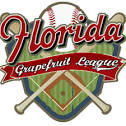
The original plan was to go to a Florida Grapefruit League spring training game on Monday afternoon. Then on Tuesday I would leave Florida bound for country A. I would spend a few days touring, see the race on Sunday and be back in San Clemente by the next Monday. My little 11-day trackchasing/touring trip was pretty well planned although nothing was set in stone. For me nothing is ever set in stone.
It was in about the second inning of the Miami Marlins – Washington Nationals game at the Roger Dean Chevrolet Stadium in Jupiter, Florida that my near-term world took a geographical turn. Changes like what I would encounter are simply considered new opportunities for me. A wise person once said that everyone gets to choose how they want to react to the things they encounter in life.
Like I said I got the word that country A had cancelled. I immediately sent a message to Mohamed in Maldives. Remember, the Maldivian time zone was nine hours ahead of the time in Florida. That meant it was about 11 p.m. his time. He responded quickly.

He was happy that country A had canceled. That meant he and his country could play host to my trackchasing. However, because Hulhumale, the city where the race would be held, has to close a road in order for the race to happen in Maldives he did share a caution. He told me they normally guarantee the racers two or three days in advance the road can be used for racing. I was contacting him SIX days before the race.
We agreed he would check with the authorities tomorrow, Tuesday his time, which was still five days in front of the race. If they would commit to Mohamed he would tell me and I would buy an airline ticket and start heading in his direction.

I was in Florida. It was nearing 3 p.m. The price to fly from Miami to Maldives had just increased. Airline prices often do that a day or two ahead of departure. The price from New York was high as well.
I had to make some decisions and I had to make them fast. The lowest airfare was available with a departure from Los Angeles. However, that flight was leaving tomorrow, Tuesday, at 11:45 a.m. I checked Miami-Los Angeles flights for later this afternoon and evening. It was spring break. They were full.
I had picked up my rental car in Miami and was expected to return it there. However, in Florida one can often pick up a car in one place in the Sunshine state and return it to another location in Florida at no extra charge.
I checked flight options out of Ft. Lauderdale, Tampa and Orlando. There was an 8 p.m. flight from Orlando to Los Angeles. That would work. I called the National Car Rental Company. They would let me return my car to Orlando at no extra charge.

I would standby for the flight leaving Orlando, home to Disney World. That meant if there was at least one open seat I would get it. If the flight left Orlando with all paying passengers I would stand at the window and wave good-bye at eight o’clock at night to the California bound passengers!
Remember at this point I had no confirmation from Mohamed that the race was 100% firm from the government’s point of view. He and I had agreed he would try to give me the go-ahead or not at 11 p.m. California time. That would be 2 a.m. in Florida where I still needed to make that flight out of Orlando. I made the flight! However, there were issues.
Just eight days ago Carol and I sat on a Los Angeles bound flight from Ft. Lauderdale, Florida for 2 ½ hours and then flew for six hours back to the Golden state. Tonight, with bad weather around the Orlando airport, we sat on the plane for more than an hour before flying for nearly six hours back to my home state.
I landed at LAX at 11:30 p.m. The flight getting me toward Maldives was leaving Los Angeles tomorrow morning at 11:45 a.m. I had just over 12 hours to get the word from Mohamed and book a flight.
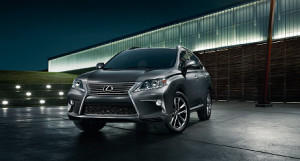
When I landed at LAX there was no word from Mohamed. At that point the plan was to get the Carol Lewis owned and MFunds sponsored Lexus RX 350 from the LAX parking garage and make the 65-mile drive home. Even if the race and trip to the Maldives never came off at least I was back in California and not stuck in Miami or New York trying to get on a plane with a million teen age spring breakers.

At a little past midnight, I got the message from Mohamed. The government was still giving their OK to close the road so they could race. However, Mohamed needed to hedge his bet. It could still rain or the government could reverse itself. He was doing all he could for me but there were no guarantees. I understood. I appreciated his efforts. If the plan went south it was on me and not him.
Tuesday – March 20, 2018
My Tuesday started early. At 1 a.m. I was still 30 miles from home. I couldn’t risk waiting another thirty minutes to buy the ticket in the comfort of my own office. The price could go up at any minute. I pulled off at a freeway exit that I knew had lots of retail stores and parking lots.
There I used the “tethering” capability of my iPhone to create an internet connection for my Apple MacBook Pro. Before I go much further I want to point out something that may or may not be obvious.
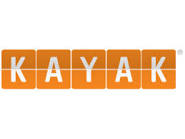
There are lots of points where the plan can go forward or crash. By having the resources, including people, systems and advanced technology at my disposal I can “steer” the plan. I find the more steering I do the more successful I am. By the way I use Kayak.com to check airline price and complete most deals.
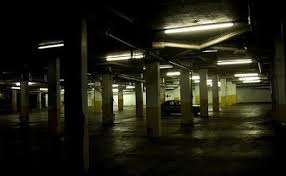
In that Huntington Beach parking lot, I bought an airline ticket from Los Angeles to Male, Maldives connecting in Hong Kong. I suspected there was no one else doing such a thing in Huntington Beach tonight at this hour in a vacant parking lot.
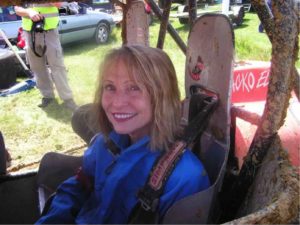
I completed my drive home. I arrived back into the loving arms of a sleepy Trackchasing’s First Mother. It was 2:08 a.m. Tomorrow’s flight was leaving now in a bit less than 10 hours. I gave myself four hours to sleep. There was another hour for packing, showering and getting checked in on-line with Hong Kong Airlines.
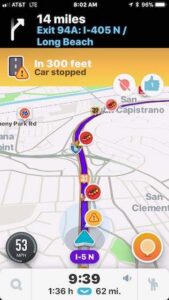
Now I had to battle morning rush hour Los Angeles traffic for 65 miles back up to the Los Angeles International Airport. That took about two hours. Then it was a twenty-five minute walk from my parking garage to the Tom Bradley International Terminal at LAX.
Checking in with Hong Kong Airlines went smoothly. I checked one small bag that weighed 15 pounds. That was well under the limit of 44 pounds I could have used. I only need five days of clothing so my checked bag was fine.
The weight limit for my carry-on bag was 15 pounds. When the agent wasn’t looking I weighed that bag. It came in at 18 pounds. I quickly took out my three-pound laptop computer. The agent saw that my bag now came in right on the 15-pound limit. He complemented me on meeting their rules. I squeezed my computer a little more tightly under my arm and smiled back at him. As soon as I had my boarding pass I found a quite spot and put my computer back in my bag. Sometimes you just gotta do what you gotta do.
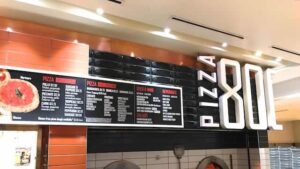
The entire time from 1 a.m. last night had been a rush. It never let up. However, I kept my eye on the prize. There was just enough time to order a pizza at a place called “Pizza 800 Degrees” in the international terminal. LAX is under a major renovation and has been for a few years now. The international terminal was the first completed project. It’s great. With a pizza box under my arm I was one of the last passengers to board the plane for the nearly 16-hour flight to Hong Kong, China.
I had an aisle seat. I had hoped to have an open middle seat. That was not the case. What I did find in the middle seat was kind of a cross between John Candy and a New York taxi driver. Why couldn’t I get some little introverted 90-pound Chinese grandma type?
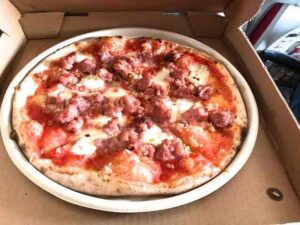
John Candy….er my seat mate made several comments about my pizza and why I should consider sharing it. That wasn’t going to happen in my lifetime. He wasn’t a huge guy but he still hung over with his leather jacket into my space. I hate it when that happens.
This guy was one of those folks who must verbalize every thought that comes into his head. I hadn’t been in my seat for five minutes and he had already sent ten verbal comments my way. This was going to be a LONG 16-hour flight.
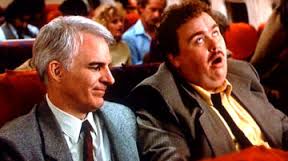
Then as if by the grace of God him/herself, the flight attendant appeared. She told my “John Candy friend” there was an aisle seat for him to use somewhere else on the plane. Yes, it was like a divine intervention. I leaned over and told the young woman in the window seat, “We must be living right”!
There were electrical outlets on the plane. That’s always a good thing on a flight this long. Nevertheless, I used my laptop power wisely. Technology is like the air we breathe. Without power there is no air! Some of the battery power was used to write this report. I watched on board movies and slept some. I just needed to ride this plane out that I had boarded on Tuesday morning. When we touched down it would be Wednesday night!
Wednesday – March 21, 2018

We landed in Hong Kong, China at about 7 p.m. Most of the people on the flight were Chinese. The woman sitting in my row’s window seat was a Duke graduate. She lives in Los Angeles and was going to Hong Kong to visit her boyfriend.
I was able to clear border control quickly. To show you how “last-minute” this trip was I filled out my Hong Kong immigration card while I was in a moving line waiting to meet with a Hong Kong immigrations agent. The entire process of “getting into” Hong Kong took about five minutes.
Now, I needed a hotel. When you travel to faraway places like Hong Kong or anywhere else and land at 7 o’clock at night do you normally have a prearranged hotel? I suspect that most people would answer, “yes” to that question. However, I am a trackchaser. As a matter of fact, I am the World’s #1 Trackchaser. I have seen auto racing in more countries around the world than any other trackchaser.
I work with the Randy Lewis Racing research department. They do things a little bit differently in their shop. When I arrived, the plan was to go online, probably using Priceline.com, and get a hotel. It was time to do that now.

I was a little surprised there were very few offerings on Priceline.com. The few choices there were were expensive in the $300-800 U.S. dollars per night range. The dreaded east coast trackchasers may have budgets that can handle those high prices but I don’t.
Therefore, I went to Plan B. It seems like I’m using Plan B a lot on this trip. Plan B tonight would be to use Kayak.com as my travel site.
There were hundreds of hotels on Kayak for me to select from in Hong Kong. Before I made a commitment, I did have to ask a woman selling metro train tickets nearby what geographical area might be best. She was most helpful. Most people in Hong Kong and really throughout the world speak enough English that I won’t starve or go without overnight accommodation.
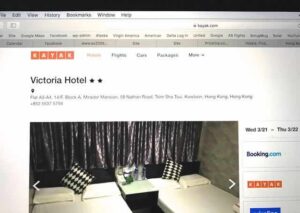
Soon I found myself selecting a place called the Victoria Hotel. It was located on Nathan Road. Nathan Road is a popular street in Hong Kong. It was a bit of a stretch to say the hotel was really on Nathan Road but we’ll go with that for now.
I was attracted by the $76 per night price. Of course, that’s in US dollars. Although the hotel came with a two-star rating, out of five, it also had an 8.8 customer rating on a 10-point scale. That’s a very high rating and convinced me that I had made a wise choice. At least I felt that way standing in the Hong Kong International Airport!
Now I needed to get from the airport to the hotel. I considered using Uber. The Uber fare would be about $31 dollars U.S. one-way. That would be a nice fallback option. However, I was interested in a more eclectic transportation method. It would probably be less expensive as well.
Before I go any further let me point something out to the reader. I guess I could do these trips the “easy” way. I could use the “guided tour” method for traveling. We have actually done that on two different occasions on our hundreds of trips. One we had a 10-day guided tour of Russia. On another occasion we did it that way in China. Russia and mainland China are two of the more difficult countries to navigate on one’s own.
However, I don’t really want people to “guide” me. I want to be my own guide. If I want to go left rather than right then I will go left. I did one trackchasing trip on a fully guided basis in Western Europe. That single trip convinced me for all time that I never wanted to do a fully guided trackchasing trip again.
Have you ever been the passenger in a car when someone else does both the driving and the navigating? The traveling experience is much different when you’re just looking out the window compared to deciding which turn to make in three miles isn’t it?
Yes, it is much much “easier” to have someone pick you up when your plane lands, drive you from point A to point B to point C and then drop you back at the airport. In my opinion that takes the adventure out of the trip. Nope, the guided tour trip is not for me except in the most unusual of circumstances. Yes, I will take all the advice I can get from people who know more than I do about whatever trip I plan to take. However, in the end it is me that must accumulate all of the advice and strike out on my own.
Remember I do these trips for the adventure. Simply hopping in a taxi or taking an Uber, which I’ve used hundreds of times, would not exactly be adventuresome. I had something else in mind.
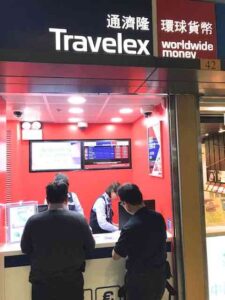
Before I made any of those transportation decisions I needed to make sure I could pay for it. Lots of taxis wouldn’t accept credit cards. I only had U.S. dollars and euros with me. That being the case I went over and exchanged $60 U.S. into about $440 Hong Kong dollars.
The Travelex location had a friendly older English-speaking Chinese woman handling things. She gave me good advice and answered my questions.
Her recommendation was to buy the round-trip express train ticket from the airport to Kowloon station. There I would switch from the train to a complimentary shuttle bus. The bus would take me from the train station to the Holiday Inn on Nathan Road. She told me the Victoria Hotel was near the Holiday Inn.
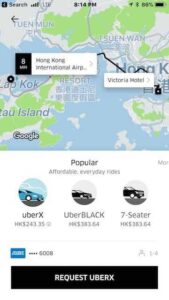
That was great advice. The round-trip fare would be $185 HK, which was about $23 U.S. Considering the trip would have been more than $60 U.S. with Uber and even more expensive using taxis her idea was a great value and it met my requirement for adventure.
Getting on the modern train to take me from the airport to Kowloon station was easy. I was carrying just one smaller rolling bag that weighed 18 pounds. I had checked a nearly identical bag, that weighed 15 pounds. My layover in Hong Kong would be nearly 24 hours. I hoped when I got off the plane in Maldives my checked bag would be there! I suspected it would.

It was now dark in Hong Kong. The 22-minute train ride went quickly. In Kowloon station I got some more good advice on how to catch the shuttle bus. Soon I was being deposited at the Holiday Inn. I knew the Victoria Hotel was located at 58 Nathan Road. There were not a lot of street numbers but just enough to get me over to the Mirador Mansion complex. That sounded pretty fancy. It wasn’t. The Victoria Hotel was located in the Mirador Mansion complex.
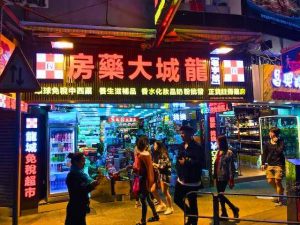
Nathan Road is a very popular street in Hong Kong. Hong Kong, at night, is a lot like walking in New York City or maybe even Las Vegas. There are lots of neon signs and foot traffic at all hours of the day.
The weather was warm and comfortable. I was wearing short pants like I always do and couldn’t have felt more comfortable. The walk to Victoria Hotel from where the bus dropped me off was only a couple hundred yards.
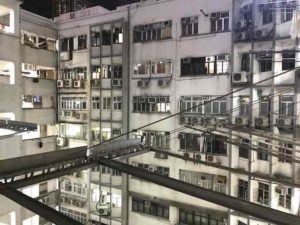
The Mirador Mansion complex is home to some small independent retailers such as tailor’s, gift shops and convenience stores. Behind all of the retail stuff was an old 16- story building that appeared be residences for both individuals and possibly for small hotels.
The Victoria Hotel was located on the 14th floor of this building. There was a bank of four elevators all going to different floors. That was a smart idea. That way travelers didn’t have to stop at every floor on the way up to wherever they might be going.
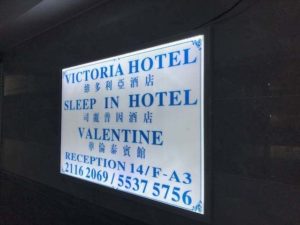
When I got off on the 14th floor it took some doing to get directed to the Victoria Hotel. Please don’t miss the pictures of this part of my adventure. At one point I began to wonder if a simple $300 U.S. reservation at the Holiday Inn might have been a better idea. If Carol had been with me it would have been. Carol wasn’t with me. Soon I would conclude the decision to go with the Victoria Hotel was a good enough one.
The hotel was not a large place. It had just eight rooms. It was now around 9 p.m. When I tried to enter the door for the Victoria Hotel it was locked. I had to wait a couple of minutes in a somewhat shady darkish looking area for the young desk clerk to check me into my room.
The “lobby” was small. It might have been six feet by ten feet or maybe less. It is common in these types of places for the desk clerk to sleep overnight on the floor or a small cot in the “lobby”. I first saw this on a trip to Senegal with son J.J.
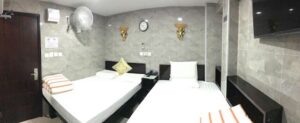
My room itself was excellent. It was modern, clean with lots of tile on the walls, floors and bathroom. I had a “twin” room. It Included two double beds.
The air-conditioning was stout. There was a fan to supplement that if needed. The room had a hotel safe. I think every hotel should provide one of those. That was also a smaller flat screen TV. I rarely, if ever, turn on the TV in my hotel room. I’m usually busy using my phone and/or computer. That’s my entertainment.
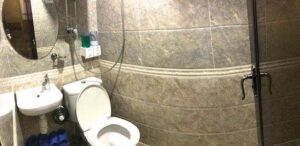
The bathroom setup was interesting. I’m going to guess the entire bathroom measured about 3 feet by six feet. That space included the toilet, sink….and shower. Yep. That’s not a lot of space for that threesome is it? That meant in that small space I could shave, shower and shit as we used to say in the Marine Corps.
I might add this. Going through Marine Corps boot camp taught me one important thing. Each day was a struggle. The objective when we hit the “road” at 5 a.m. each morning was to get to “lights out” at 9 p.m. each night without any major catastrophe occurring.
There would be obstacles, literally at times, that came up during the day. Some were difficult to both encounter and overcome. However, in the end what I learned from successfully completing United States Marine Corps boot camp is that I can do just about anything. It’s only a process of figuring out how to make it happen and then doing it.
With the hotel check-in process completed I decided to go out on the town and check things out. It was then that I noticed that I had already walked a little bit more than three miles for the day. Of course, I had to keep going until I met my four-mile daily requirement. I was hungry too.
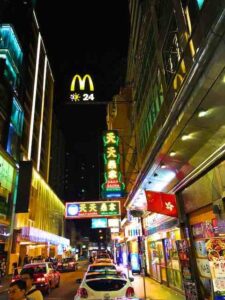
In the neighborhood there were lots of small independent restaurants. I saw several McDonald’s. However, I was in the market for dim sum. I love dim sum and eat it whenever I can.

Essentially dim sum are Chinese hors d’oeuvres. You can get, beef, shrimp or vegetarian dim sum. They normally come in little dumplings filled with whatever delicacy you choose. During the trip I saw all kinds of combinations including duck’s tongue in wine.
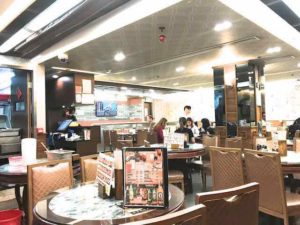
Tonight, I found one of those restaurants just off the main drag and one flight of stairs down. My plan was to start with one order of minced beef dim sum, three pieces, see how that went and order more later. However, when I went to reorder some more dim sum, this time a crab rice combination, I was informed that dim sum was no longer being served past 10 p.m. My server spoke very little English. That important tidbit of information was not communicated. I went to the regular menu and ordered some Chinese fried noodles which would likely be called lo mein in the U.S.
My server didn’t speak virtually any English. However, she did give me a wink and a nod of approval on my use of chopsticks. Do you use chopsticks? I do several times a month at home.
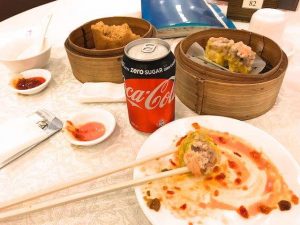
I have tried to teach both trackchasers and my brother Mark how to use chopsticks. They have not been good students. Frankly, I don’t know a single trackchaser that is comfortable using this tool. I have long told my unmarried brother that the use of chopsticks can be a “chick magnet”. Even that piece of gender generating information has not motivated him to leave his comfort zone!
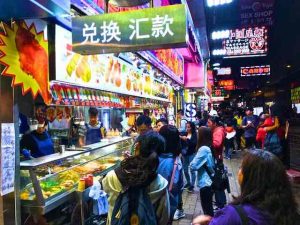
From my dim sum location, I did some more walking. The streets were busy. I felt perfectly safe. It was amazing that after just a 16-hour flight I could be in such a foreign environment enjoying myself. With the Hong Kong time zone being 15 hours ahead of Los Angeles what was 10 p.m. the next day in Hong Kong was 3 p.m. yesterday in Los Angeles! Got that? Soon I’ll be going to bed at the equivalent of 3 p.m. my time for the night. I did not sleep all that much of the plane. Getting a good eight hours of sleep or maybe more sounded like a fantastic idea.
I was more than satisfied with the Victoria Hotel. As a hotel room it had everything I would need. Yes, it was in a little bit of a funky location. Nevertheless, it met the adventure requirement to a “T”.
Thursday – March 22, 2018
I woke up a couple of times during the night. That’s to be expected when you go to bed at 3 p.m. in the afternoon in the time zone you just came from.
The very coolest thing about being in Hong Kong for 24 hours was that I had full cell phone capability. That meant I could text my friends and family back home. I could order some flowers for my mother-in-law June so that when Carol and her sister Patty visit her in Denver next week they will have a nice surprise. I could be in contact with Mohamed my new friend from the Maldives. He told me we were all set for the racing adventure in the Maldives.

Mohamed had texted me that if I would forward to him might passport information he might be able to make the border control/customs process go a little bit more smoothly in Maldives. Let’s think about this for a moment. I had never ever met Mohamed in my life. Would you send all of your passport information to a person in a foreign country you have met on Facebook? No, I didn’t think you would.
Nevertheless, I sent him my passport information. I guess you could call me a trusting person. I also like to think of myself as a good judge of people. A major part of my early business career was spent interviewing people. I think I have a much stronger experience base for judging people that I gained from doing hundreds, if not thousands, of interviews. After having sent and received well over 100 messages to Mohamed I had full confidence in him.

While I was sleeping overnight Mohamed sent me a message. He told me I would be staying at a place called “The Orca” a guest house in Hulhumalé. I would probably need that information when I cleared border control.
Until about a week ago I could not have told you where Maldives even was on the world globe. Until the Randy Lewis Racing research department sent me a memo telling me that Maldives had trackchasing countable racing I didn’t know that either. It’s pretty amazing how one’s life plan can change in the span of a week or less.
The flight from Hong Kong to Male, Maldives was going to be seven hours long. I’ll be on that flight tonight at 6 p.m. That being the case I had to get moving and make it a great day. I was out the door of my hotel before 10 a.m. I had several hours of Hong Kong exploring to do before I would head out to the airport.
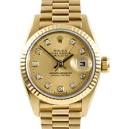
As I walked along the city streets vendors encouraged me to explore their wares. There were lots of watch sellers including those offering Rolex watches. I have a gold Rolex presidential watching sitting in a bank safe deposit box at an undisclosed location. For me it was replaced as a time piece by my iPhone. I attempted to give it to my two sons and son-in-law but no one wanted it.
Others were selling hand-made suits. I wanted to tell my Hong Gong entrepreneurs that time had passed them by. Who uses a watch or wears a suit nowadays? Those are dying industries. However, I have learned that 99.9% of people I meet are not looking for advice. They think they already have things figured out. Some do. Some don’t.

Then there was a young woman named, “Angel”. She was selling massage services. She informed me that she could even come to my hotel. Now this young lady was on to a good thing. Everyone loves a massage. If it is could be done in the privacy of your own hotel room that was even better. Alas, I would not be a consumer of Angel’s services but I didn’t think she would strike out with everyone.
Either in advance or when I’m in the midst of a trip I will consult TripAdvisor for “things to do”. I’ve found this to be an excellent source of traveling and touring information. I don’t want to re-invent the wheel. I’ll take advice from others and then tailor it to my needs.
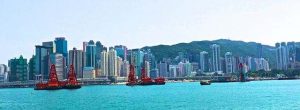
The #1 rated thing to do in Hong Kong is to see the city’s skyline. It might be the most impressive skyline anywhere in the world. The #2 rated tourist activity is the ride the centuries old ferry line, Star Ferry.
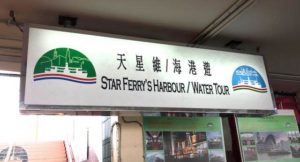
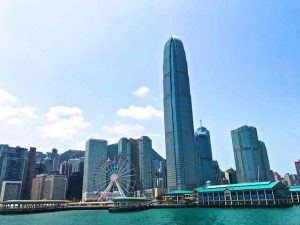
Carol and I have done this before. We did it at night, which is the best time. However, today I thought re-visiting the Star Ferry even during the day would be a relaxing way to spend an hour near lunchtime. It was. The $105 HK fee (about $15 U.S.) was less than half of what they charge for the nighttime ride. With a good cellphone connection all over Hong Kong I gave a quick call to Carol to update her on my status. I told her all was going well.

After the ferry ride I got a good recommendation for more dim sum from a fellow in the tourist administration office. He was right. It was good dim sum.
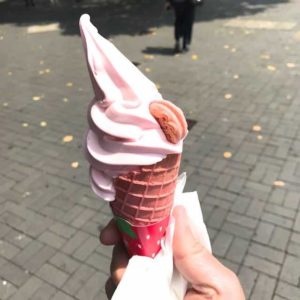
On the walk back toward the shuttle bus to the airport location I stopped at McDonalds. Now before I go any further I don’t think ANYONE should eat at McDonalds when they are on vacation in a foreign country. However, there is one exception to that policy for me. I eat at Mickey Ds a lot in the U.S. When I’m traveling out of the U.S. I like to stop in and see if they have anything on their menu they don’t have at home. That’s why I stopped today. They were serving strawberry ice cream in a waffle cone. I had to try one. It was mediocre.

It was about time to head to the Hong Kong airport. I would get there the same way I left the airport last night. That meant a shuttle bus to Kowloon station and then the MTR train to the airport. I had already bought a round-trip ticket last night for today’s travels. All of that went smoothly.
I figured it would be best to take an early dinner for fear the food on the plane would be fair at best. The Hong Kong airport has a huge food court. I selected some really good fried noodles with shrimp.

Going out on a limb I ordered an entrée in the dessert section I had never heard of. It was called “Black sesame paste sweet soup”. Note to self: Don’t ever order that again. It tasted just like I was eating black paint!
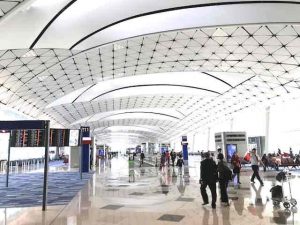
The Hong Kong airport terminals are huge. They occupy some 710,00 square meters of space. I would have thought the HK airport was the largest in the world after walking all over it today. It turns out the Dubai airport terminal is currently the biggest at an unbelievable 1.9MM square feet. In 2019 the new Beijing airport will trump even Dubai.
The flight was Hong Kong to Male was WIDE open. If the plane’s capacity was 300 there couldn’t have been many more than 50 passengers. I slept some on the flight and watched a movie. The flight seemed to go fast. Soon we were touching down in Maldives. This would be the 89th country I have visited. This was going to be fun. I was looking forward to this trip!
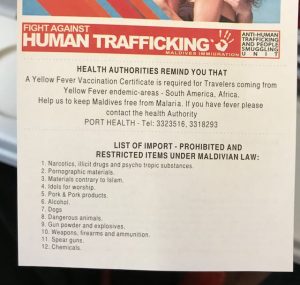
There were several requirements for border entry in Maldives. Along with the “normal” restrictions I could not be bringing any materials contrary to Islam, idols for worship, pork & pork products or spear guns. I was safe on all of those counts!
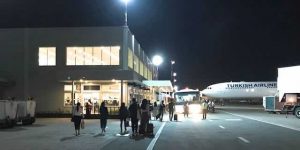
I had landed at just past 10 p.m. There were no formal enclosed jet ways being used. I walked down the steps of the plane and would experience my first whiff of Maldivian weather. I would come to find out the one and only thing that I would not like on this trip was the weather. It was hot and humid, like the most warm and humid day in a Midwestern summer. Growing up in Illinois we used to call those weather conditions, “still”. It was warmer and more humid than Hawaii. Some folks are a fan of those conditions. I am not.
Clearing Maldives border control was quick and easy. I waited a couple of minutes for my one and only small checked bag. Now the fun would begin.
My main contact Mohamed told me he would be at the airport to pick me up or “one of his guys would”. I would come to find out that Mohamed had surrounded himself with a group of young friends who were some of the nicest guys a fellow could have for friends.
For the remainder of this story I’m going to tell you about my encounters with Mohamed and his friends. As you listen to my tale I would you to think about a few things.
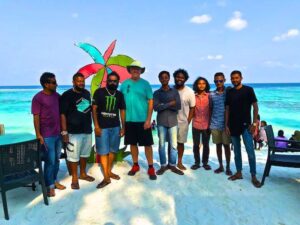
I am 69 years of age. Mohamed is 31. I would guess that most of not all of his friends that I met were in their twenties. I am a white man. My new friends were all native Maldivians with dark skin. I am tall. They were not as tall as me. I spoke only English. My friend’s native language was Dhivehi.
Why was this noteworthy? Because people tend to surround themselves with other people who look like them, talk like them and think like them. Not sure about that? Go to your local shopping mall. The old people hang with the old people. The young with the young. The whites with the whites, etc. Most people get very little chance to spend time with their opposites.
As I stood outside the airport terminal there were many drivers and resort greeters ready to meet their arriving guests. The greeters came with placards and electronic signs with the names of their guests on them.
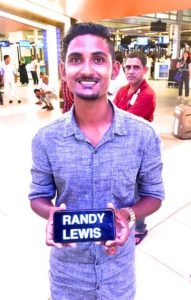
At first, I didn’t see my name. Then a young slender fellow appeared with the name, “Randy Lewis” on his sign. This would be my first meeting with 24-year old “Tonikey”. He was a smiling fellow and a great first person to meet in Maldives.
Although it was past 10 o’clock Tonikey asked if I would like to have some dinner. I figured he must be hungry so I accepted his invitation. Even at that hour there was a small outdoor restaurant at the airport that was open. I ordered a small personal-sized pizza. Tonikey had only a bottle of Coke. Now I knew why he was so thin and I was not! When the check came Tonikey paid for me dinner.
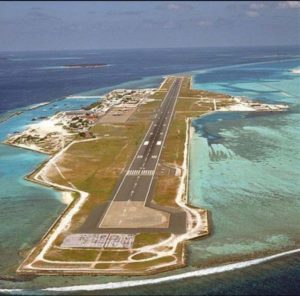
The airport is on the island of Hulhumalé. My guest house was on the same island. In the distance we could see Male, the capital of Maldives and its largest city. In order to get to Male we would need to, and did several times, take a ferry boat. In point of fact, Maldives has 1,198 different islands and all can be reached on non-stop ferries from Male.
Tonikey haled a “taxi” for us. It was really a mini-van. This would be a shared ride. As you may know Maldives is a 100% Muslim country. When we jumped in the back seat of the mini-van there was already a grandmother, mother and small child in the car. They were dressed in the traditional hebib Muslim clothing.
It didn’t take long to reach the Orca House in Hulhumalé. I would be staying in this four-room guest house. In the conversations Mohamed and I had leading up to this trip he told me he would provide for my four days of lodging at no expense to me. What a generous offer.

U.S. dollars are accepted for financial transactions here. I had been advised to bring lots of small bills which I did. At the end of the trip I had only spent U.S. dollars once (at the post office to buy stamps) and never did exchange any money for Maldivian rufiyaa.
So how does one spend four days in a foreign country without spending almost any cash? As a guest many of my expenses were picked up by my friends. When we arrived at the Orca House Tonikey paid the $10 U.S. taxi fee. That was nice of him. However, on most trips that I take it is me picking up the check. Things had to change just a bit.
I made an agreement with Mohamed, Tonikey and the other fellows I met. They were providing my room. They bought all of our ferry tickets. I would pay for the meals. That seemed to work for everyone.
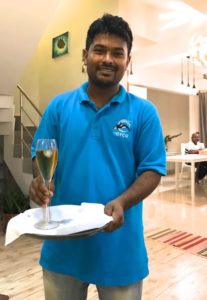
When I “checked into” the Orca House I received a warm greeting, a wet towel and a glass of something that tasted like wine. I knew it couldn’t be wine because alcohol is prohibited in Maldives.
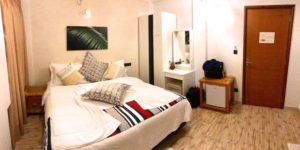
The island where I was staying was built around 2001 using “reclaimed” land in the middle of the Indian Ocean. More on that later. The Orca House was brand new. My room was large and had all of the appointments that any really nice hotel room would have.
It was going to be great to get a good night’s sleep. I had been flying for about 29 hours in the past forty-eight. I turned on the room’s air-conditioning full blast and spent my first ever night in the Maldives.
Friday – March 23, 2018
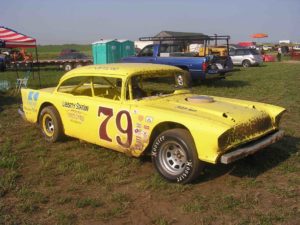
Today was race day! I was saying that for the 79th time in my trackchasing career….in a new country. I had no idea when I first began my hobby that it would morph into a worldwide travel phenomenon.
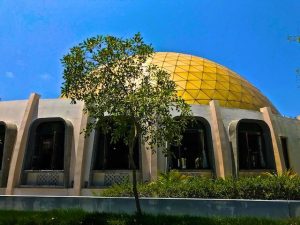
I’m not exactly sure what time I had set my alarm for. It never went off. However, at just about 5 a.m. the “Call of prayer” was broadcast over a loud speaker from a nearby Islamic mosque.
I am not an expert on Islam. I do know a few things about the religion though. The Islamic equivalent of a minister or priest is called the “Imam”. This gentlemen speaks in sort of a “sing-song” voice calling the followers to prayer. Muslims pray five times each day. The exact time for each prayer period is determined by the position of the sun. During my entire stay the call to prayer would wake me at about 5 a.m.
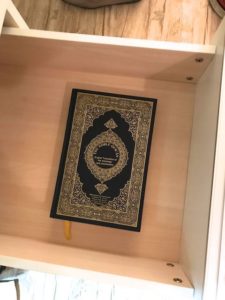
In many American hotels guests will find a copy of the Bible in a hotel drawer. In my room at the Orca House I found a copy of the Islamic Quran.
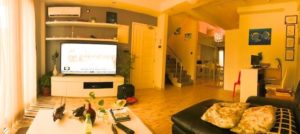
Where I was staying was essentially a big house. There were a living room where the manager and the Orca’s guests relaxed and watched TV. Just off the living room was a kitchen. This was not a “B&B” but a guest house. Breakfast was not included.
Each day I would spend some time talking to the caretaker and guests. They understood English and spoke it well enough that we could converse. I met the owner of the Orca House. He was also a member of the Maldivian parliament (85 total members) and has been for more than ten years.
My room had a safe. Normally I would put my laptop, passport and other valuables in there while I was gone from the room. There were two major issues with my safe however. First, it was small. My 13” laptop would not fit in it. Secondly, it was not secured and weighed only about five pounds! An unattached safe that weighs five pounds isn’t of much use! Mohammed and Tonikey to pick me up and go to track. I took my computer bag. Hotel safe weighed 5 pounds and not attached to anything.
When I travel I’ve learned to expect the unexpected. Even though I can expect the unexpected the definition of unexpected by its very nature means it comes at a time and in a form that you don’t expect!
With no room safe I elected to take my entire carry-on bag with all of my valuables to the racetrack with me. Mohamed and Tonikey would be picking me up in their car. I would simply store my stuff safely in their automobile while I enjoyed the races.
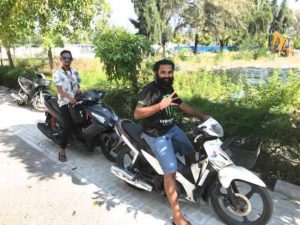
Then the unexpected showed up at the Orca House. The guys were there on time. They were there to take me to the nearly Hulhumalé Racing Track. There was just one unexpected item. They both showed up on two motorbikes! Yep. As they told me, “This is how we move around”. O.K., then. The unexpected had arrived and I would go with it.
I hopped on the back of Mohamed’s motorbike. Tonikey took my 20-pound bag with my computer and valuables and put it on my bike.
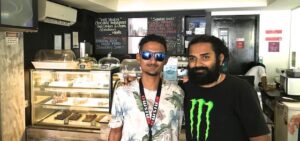
Let’s think about this for a moment. It was 9 a.m. The racing was set to begin at 10 a.m. or a little later. Mohamed asked me if I had had breakfast yet. No, I had not I told him. “Then let’s go get you some breakfast then”, he said. Off we went in search of something to eat on our motorbikes.
I think if I had contacted Kyle Busch about coming to watch him race at Bristol he would not be taking me to breakfast an hour before the green flag. I was much happier to be with Mohamed and Tonikey than Kyle Busch.
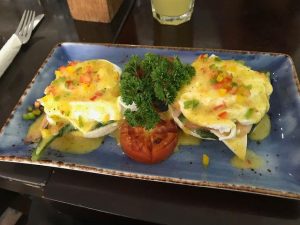
We sat down for our morning meal. I ordered the eggs benedict. Both of my new friends had coffee only! There’s a reason they are skinnier than me. I was pleasantly surprised to learn that everywhere I went my Visa card was accepted.
It took me a moment to learn how to ride on the back of a motorbike. These were not “scooters”. They were 125cc or so bikes. Once I learned that I didn’t have to hang onto Mohamed’s shoulders for dear life it was a much better ride for me…and him. I would ride on the back of the bike for the rest of the trip. No one rides with a helmet in Maldives.
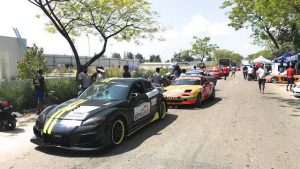
Today’s racing would be held on a 1.2 kilometer street course. They’ve been racing at the Hulhumalé Racing Track, yes, that’s the official name for 12 years! I wondered why the people who specialize in knowing about the world’s racetracks had never known about racing in Maldives. Of course, that information will mysteriously pop up on their websites soon….with no credit given to the person or organization, Randy Lewis Racing research department, who discovered it. That’s just the way some people roll.
Today’s racing was for both cars and motorcycles. There were two categories of cars including the 2000cc and under group and the turbo charged cars. The lesser powered vehicles brought five entries and the more powerful group had four starters. There were several categories of motorbikes with 30-40 of the two-wheelers competing today.
Today’s street course was conducted on city streets. The race configuration was that of a road course. There were five left hand turns and one right. They was no PA system or track announcer. There was no food concession or toilet facilities I saw. The city pretty much closes the street and the guys race!
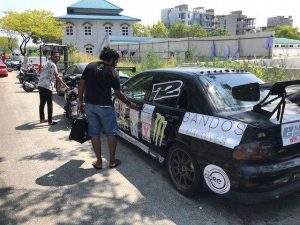
Mohamed lives on the neighboring island of Male. He has two race cars, one for each class. However, his turbo car (above) has a bad crankshaft and would not be racing today. Mohamed simply parks his cars on the city street where the racing takes place when they are not being used.
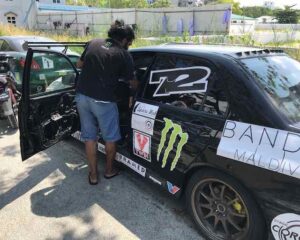
Today, the car that wasn’t running was used as a “storage locker” for my computer and valuables. That was a first. There were lots of firsts on this trip.
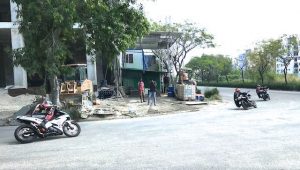
The bikes raced first. Then the 2000 and under car category lined up for their 15-lap feature event. Sometimes the group has a two-day racing show. This weekend they would be racing over just one-day, Friday. Each category of cars would have one race.
With Mohamed busy racing Tonikey was in charge of watching over me. I would come to learn that I would not be allowed to be out of their sight. There was an unspoken to me anyway agreement between Mohamed and Tonikey and the other guys that I would be “connected” everywhere I went.

There were probably 200-300 people roaming the pit area. There was no admission charge or stupid pit pass upcharge. Spectators came and went and watched the racing. There were no real safety barriers separating the track, the cars and the spectators. Maybe that’s the way it should be. Everybody need to be responsible for their own actions in life, right?
Street course racing is probably my least favorite type of racing to watch as a spectator. Why? For the most part you can’t see much. Except for one right turn today’s track resembles an oval as much as anything. Inside the track’s line were a series of tall buildings. The buildings prevented fans from watching any more than a straightaway, a turn and maybe a little bit of the next straight.
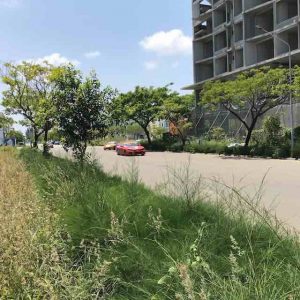
However, we had a plan for that. While Mohamed raced Tonikey and I moved around the track on his motorbike. This allowed me to get photos and videos from all angles.
Mohamed started in fifth place in the five-car event. Why did he have to start last? Today’s starting lineup was based upon qualifying LAST Friday. Did Mohamed have the worst qualification time? No, he did not. He didn’t even get to qualify. He had to work. Mohamed has his own photography studio in Male called. He does all kinds of photography including weddings and such.
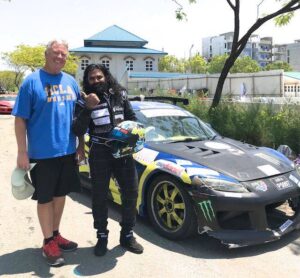
It was somewhat difficult to pass on today’s track. That being the case Mohamed finished fourth just one spot off the podium. He told me with the cost of racing it’s getting harder and harder to remain at the top position he used to hold regularly.
During a break in the racing action Tonikey took me on a motorbike ride around Hulhumalé a manmade island built in 2001. There’s a lot of new building going on in the city. The second phase of the manmade island is beginning right now. Tonikey is a great tour guide.
It was an extremely hot and humid day. I suspect the “feels like” temperature top 100 degrees Fahrenheit. One of the guys I talked too told me it was 38 degrees Celsius.
When Mohamed’s car class was finished racing the track closed for intermission if you will. This wasn’t the type of break U.S. tracks have where they try to sell you more hot dogs while they tell you the cars need to be refueled after they race 2 ½ miles during a ten-lap heat race. They were taking an intermission for an entirely different reason.

Again, in the U.S., the primary day of worship is Sunday. If you are Jewish it’s Saturday. The main day of worship in Maldives with the Islamic religion is Friday. The track went to intermission so everyone could go to prayer at the mosque or in some cases their home. That was a first!
The break would last for more than two hours. There would be enough time for a nice lunch and the fellas could go to prayer as well.
It was less than two weeks ago that Carol and I were having a beautiful lunch on the sun-drenched beaches of Mexico in the Western Caribbean. The water was several shades of blue and turquoise.
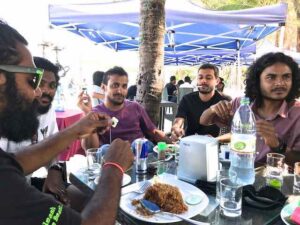
Today’s water, in virtually the same setting, was as good as Mexican and probably better. Mohamed, Tonikey and six of their buddies joined me for lunch in the shade of a grove of palm trees. We had drinks but not alcoholic drinks. Those are forbidden in the Maldivian culture.
Everyone understood and spoke English to one degree or another. Everyone, except me, had a working cell phone. They guys continued to receive and make calls, text and take photos just like young men would do where I come from. Some smoked.
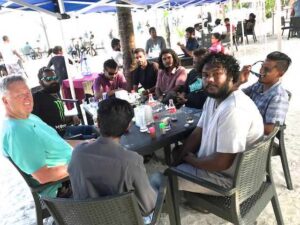
We had a really nice discussion on a range of topics. I asked each person to tell me where they would go if they could go anywhere in the world. Many had already been to nearby locations like India, Sri Lanka and China.
The answers to my question were diverse. They ranged from Canada to Norway to Las Vegas! Mohamed, the silent leader of the group told us his destination would be Male, Maldives where he currently lives.
I found it somewhat amazing that these guys with a top age of 31, and most in their twenties, would be having such a good time with a 69-year old white guy. One fella even asked his comrade to give up his chair so he could sit next to me and talk. Like I said we covered all sorts of topics. When the folks were not talking to me they conversed in their own language of Dhivehi. At one point a few of the guys at the other end of the table started laughing. I asked them what was up. They pointed to their friend who had just sat down next to me. “He’s trying to convert you to Islam!” We all laughed at that.
When lunch was finished it was time for my friends to go to the mosque. I would be dropped at my room to rest and relax. However, when we got back to the Orca House no one was there. Remember, it was only a four-room place.
I recommended they just leave me at the house and go onto prayer. Nope. They were not willing to leave me alone. Like I say they were here to make sure I enjoyed my trip in the safest manner possible. Soon the guesthouse proprietor came along and all was good.
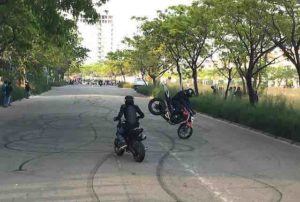
In the late afternoon everyone returned to the track for the last races of the day. Several of the bike riders and a couple of the cars did burnouts and stunts to the amazement of the crowd. There was a prize-giving ceremony and then the show was wrapped up.
It was the racing that brought me to Maldives. However, in hindsight, the racing was probably the least important part of this trip.
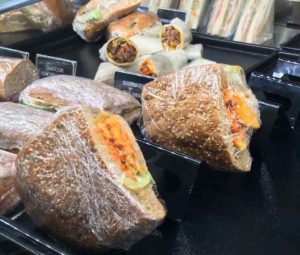
We would wrap up the evening with an informal dinner with several of the guys. We dined at kind of a combination Baskin-Robbins, Krispy Kreme deli. It gave everyone a chance to relax in air-conditioning and talk about the events of the day.

There was an option of my seeing a movie tonight. I’ve done that in several foreign countries. However, the showing would begin at 10:30 p.m. After a full day in the oppressively hot sun and humidity I was in no shape for that. I voted for the air-conditioned comfort of the Orca House. By the way it is custom in Maldives for everyone to remove their shoes when coming indoors.
Saturday – March 24, 2018
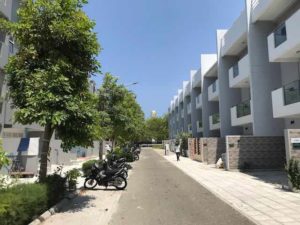
Each morning I was awakened by the broadcast from the nearby mosque calling all of the faithful to prayer. This was not my first experience with this. I’ve heard this in Indonesia, Malaysia and elsewhere. There five broadcasts from the imam each day from early morning through the evening. Can you see the mosque at the end of the street from where I was staying?
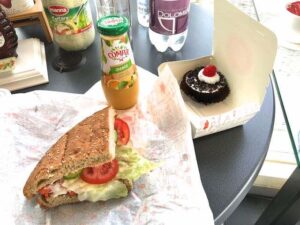
Today and tomorrow would bring the highlights of the trip. In a rare show of independence on this trip I walked two blocks to the local bakery. There I ordered the tandoori chicken sandwich, a red velvet cupcake and a bottle of orange juice. What I like about my life it that I’ve been able to eat virtually anything I want any time I want and only be minorly overweight. You can’t ask for more than that out of life.
Soon Tonikey picked me up and we were off to Male. Maldives only has about 400,000 residents spread over their 1,198 islands. Well over half of them live in Male, the nation’s capital.
There are no roads that connect each island, right? That means to get from one island to the next you need to take a ferryboat. The ferry ride from Hulhumalé to Male takes 20-25 minutes.
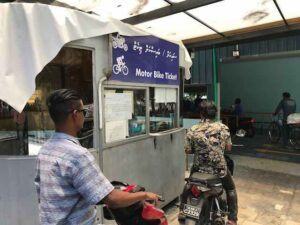
Tonikey bought our ferry tickets including a ride for his motorbike. The ferry is very cheap, I think less than a dollar per person. There are three types of ferry boats. Only one carries motorbikes. Today’s ferry had capacity for about a dozen bikes and 50-60 passengers. There isn’t much breeze or air-conditioning on these boats. It gets to be VERY hot and humid.
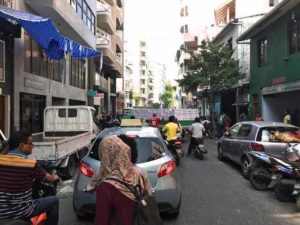
The traffic on Male is much more intense than it is on Hulhumalé. It isn’t India but it’s in that direction. Both today and tomorrow we would zip around on the motorbikes, without helmets, just seeing the sights.
The “rules of the road” are a bit different here compared to where I live in San Clemente. At home when the car in front of you slows or stops you slow or stop and wait for things to get back to regular speed.
That’s not how they do it in Male. Think NASCAR at Bristol on Saturday night. When the guy ahead of you slows you don’t hit the brake in Male you press the gas. If two bikes and a car are stopped in front of you and there’s a two-foot wide opening you go for it! There is no etiquette. There is no, “You go ahead, no I insist you go ahead”. It’s every driver or rider for himself. Don’t miss my video. With my iPhone perched over Tonikey’s head like a GoPro we roamed all over Male today.
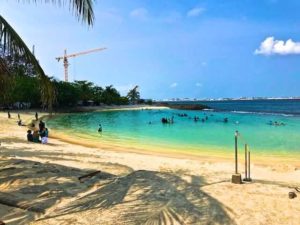
Mahomed, Tonikey and I had lunch at the Breakwater restaurant. They told me it was one of the best places to eat on Male. They have a very extensive menu. I dined on a spicy dish of friend noodles and prawns. We enjoyed our lunch and talked about the place for the day. Not only was the food good but the view was spectacular as well.
From there another friend, Sanih joined us. The four of us then went on a motorbike tour of Male. Before I go any further I’d like to point something out.
I get a real kick out of being willing to take the risk to do things that others in my peer group won’t and/or can’t do. Heck, lots of my travel experiences are things that no one would do regardless of their age.
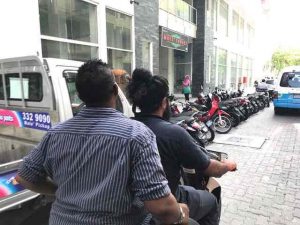
I try to put myself in situations when they arise that will meet that objective of “pushing the envelope”. I’m pretty sure you’re not going to find very many people you know hanging off the back of a motorbike in a country like Maldives enjoying their spring break vacation. I’m just sayin’.

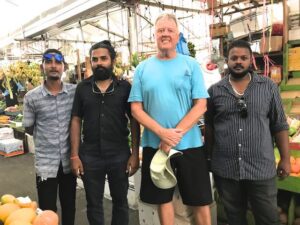
We stopped along the harbor. There were hundreds of small old boats loading up supplies for trips to the outer islands. We stopped for several minutes in a Farmer’s Market that sold about every kind of fruit and vegetable that I’ve ever seen. Mahomed made sure I sampled a fresh coconut opened as we watched.
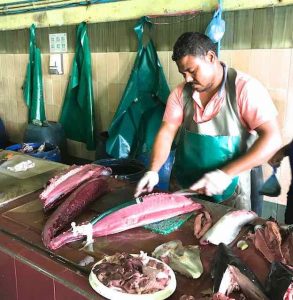
Then we went to the fish market. They were cleaning their catch. It was fun to watch an experienced fish monger dismantle a 20-pound fish. I did it with the precision and speed of the expert he was.
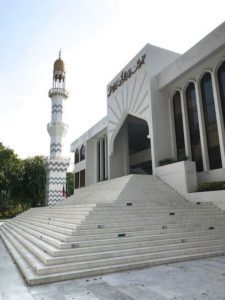
We stopped by the largest mosque in the Maldives. I couldn’t’ go in since I was wearing shorts. I never wore the one pair of long pants I brought on this trip one time. The guys I hung out with on this trip wore long pants exclusively.
I told the guys that I needed to stop at a store to get some postcards and a souvenir for Carol. They were more than accommodating. Tonikey had a “friend” who had a store that would meet my needs.
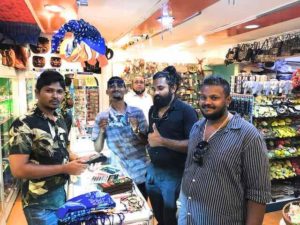
We stopped in. I saw a beautiful hard shell ladies purse made from coral. Carol would love that. However, even with the special “Tonikey” discount the price was still $300 U.S. Not knowing if Carol would even like it I had to pass. I did end up getting her a more reasonably priced purse that sported colorful coconut shells. I picked up a supply of post cards too. This had been a perfect store for what I needed to get today.
I’d like to point this out in case it is not obvious to the reader. I had made two friends, Mohamed and Tonikey whose main mission in life, at least during my four-day visit was to make sure I saw their country to the fullest, had a good time, was safe and got to do everything I wanted to do. Carol doesn’t even sign on for that contract during our vacations. I felt more than fortunate and most appreciative. I thanked them at every turn.
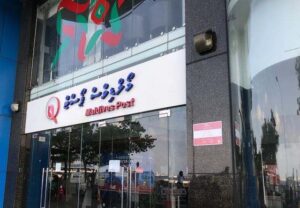
We made a special trip to the Male post office to get stamps for my postcards. They had just closed. We would try again tomorrow in Hulhumalé.
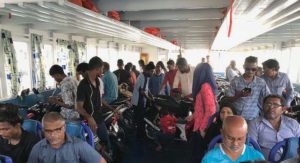
Next up was the ferry ride back to Hulhumalé from Male. Mohamed would return to his wife and daughter in Male. Sanih also would stay in Male where he lived. Tonikey and I hopped on the ferry.
Again, we talked about a movie but a full day in the heat and humidity of this climate was enough for me. I bid Tonikey farewell after an early evening and returned to Orca House. My room was modern, clean and quiet (except for the call to prayer announcements) and most of all cool! I slept like a baby at the Orca House.
Sunday – March 25, 2018
Who needs an alarm in the morning when I’ve got the 4:55 a.m. call to prayer message over a loud speaker just down the street from my guest house. Yes, it is a requirement by the government of Maldives that every citizen practice Islam. I’m just a visitor. I’m not complaining; just explaining. It’s all part of the adventure for me.
Today, Sunday is my last day in country. I had arrived on Friday night. I only had three full days in Maldives. However, this is the way I look at that. Three days in Maldives is a lot better than NO days in Maldives!
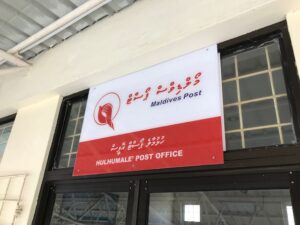
After my solo breakfast at the neighborhood bakery/deli Tonikey came by to pick me up. Our first stop was the post office. I needed to buy some stamps for the postcards I would send back to my family. Don’t you enjoy the surprise of getting a postcard? You know that someone likes you enough to take time out of their vacation to say hi.
The post office would be the only place during my entire trip to Maldives that wouldn’t take credit cards or U.S. cash. They insisted on my paying with Maldivian rufiyaa. I didn’t have any but Tonikey did. He paid for the stamps with rufiyaa and I paid him back with U.S. dollars.
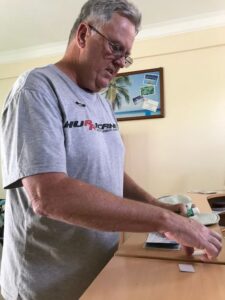
I’ve learned that when I travel even the simplest of things won’t be like they are at home. I love that about foreign travel. Folks don’t lick their stamps here. They use glue to affix their stamps to letters and postcards. Who would have thought?
I asked Tonikey if his family lived in Hulhumalé. They did. As a matter of fact, his mother and father lived just a couple of blocks away. He asked me if I would like to meet them? Of course, I would!
Soon we were pulling up to their apartment, unannounced. When I was a kid we visited most of our relatives in the area that way. Most folks didn’t go anywhere. They were nearly always at home. On the rare occasion that we would drive to a relative’s house and they weren’t home we just went back home.
Today Tonikey’s parents were both home. Tonikey is one of eight children. He has four brothers and three sisters and lives with one of his sisters in Hulhumalé.
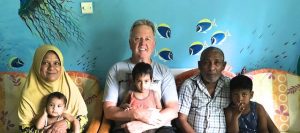
We had a great visit. His mother was babysitting for at least four of her grandchildren. I doubt they had ever met someone who looked like me. It didn’t take me long to win them over and we were high fiving and shaking hands. Getting invited into the home of people I meet in foreign countries is just about the best highlight that can come from these trips.
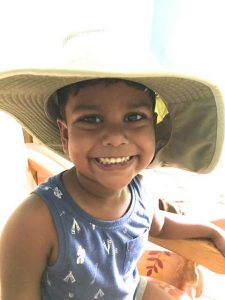
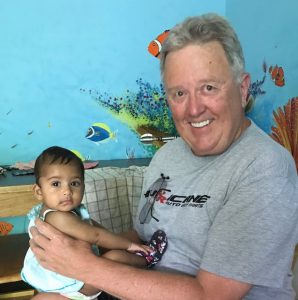
The first time it ever happened was in Scotland. Later I’ve been inside the homes of my friends in Zimbabwe, Belgium, Mexico, Argentina, Brazil, Sri Lanka, Bosnia and Herzegovina and now Maldives. That’s a pretty broad range of cultural experiences.
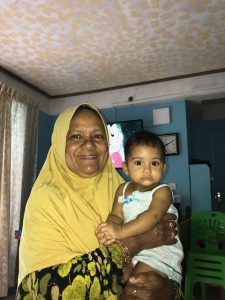
I hadn’t sat down on the sofa for three minutes and Tonikey’s mother was serving me food treats and drinks. I think she would have fed my lunch if I had let her. It was a highlight of the trip to get to meet Tonikey’s family.
The next stop was for Tonikey to get a new sim card for his phone. While we waited one of his friends hit me up to help him import some goods from the U.S. for his fledging business. I’m not sure if that will work out or not. We’ll have to wait to see what the federal government has to say.
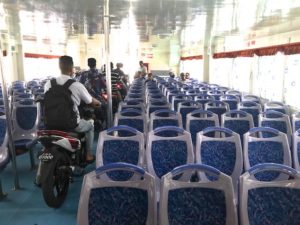
Tonikey and I were headed back to Male. That meant another ferry ride. It was about as hot and humid on that boat as I think it possibly could be. Soon we were offloading the motorbike and heading over to Mohamed’s photography studio.
As I mentioned the Maldives covers 1,198 separate islands. About three-quarters of them are inhabited. Did you know that HIGHEST point in the entire country sits at an elevation of just SEVEN feet. A deadly tsunami wave back in 2004 devastated the country.

The country has several islands that cater to the most exclusive of hotel properties and their guests. The least expensive room on one island sells for $3,500/night. Maldives has the largest fleet of seaplanes in the world. The seaplanes help connect the islands and move tourists from the one and only airport to their exclusive island getaways. Maybe that’s where the Dreaded East Coast Trackchasers take their holiday retreats with the big budgets they enjoy.
Yesterday, Mohamed had offered to set me up with a jet ski ride in the Indian Ocean. That would have been fun. However, he caught me relaxing in the comfort of my air-conditioned room and it just seem like too much trouble to go jet-skiing.

Today Mohamed had another idea. We would visit my third island of the trip, K. Villigili. This island is noted for its ecology. There are no public automobiles allowed here. The motorbikes that are here are powered only by electric motors.
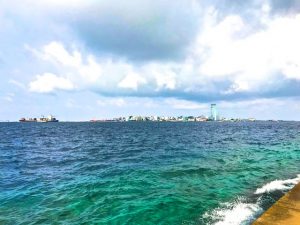
While Tonikey stayed back Mohamed and I took the ferry from Male (in the background above) to K. Villigili. He told me that one can ride a ferry non-stop from Male to each of the islands. The furthermost island stop would be an 11-hour ferry ride. That boat offered sleeping accommodations.
We had no major agenda while we were on K. Villigili. We watched school kids play dodgeball and others just enjoying the serenity of the island.

Mahomed and I walked at a most leisurely pace all over the island…and we talked. He told me that when I first contacted him about the racing in Maldives he as a little skeptical. He had never heard of trackchasing. Then when I told him I wanted to come to Maldives he still wasn’t sure about me. Even after we had committed to my visit he told me he didn’t think we would become good friends in such a short amount of time.
We spent a good deal of time talking about race and religion. I told him something that I believe in 110%. What’s that? I believe that if people could spend more time with people who are different than them (age, gender, race, religion, etc.) they would be much more accepting. People would not fear the unknown.
I grew up in a county in Illinois that didn’t have a single black resident in the entire county. As a protestant I knew just one catholic family and one Jewish family.
During my junior year I played on a traveling YMCA basketball team. The YMCA was located across the Illinois River in the town of Peoria. Our team had a black coach. There was only one other white player, other than me, on the team. When we traveled we shared hotel rooms. That was a new experience for me.
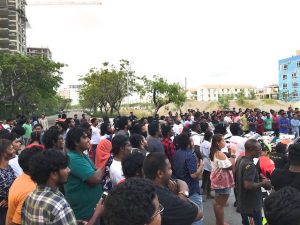
I must admit walking around yesterday’s races was an experience I have almost never had. I was just about the only white person in a crowd of hundreds. However, at that point I had made friends with about eight guys. I felt most comfortable because I knew those people had my back if needed. I also knew that Mohamed and Tonikey were well-respected and well-known within the community and they were my “connections”.
Mohamed told me that several of his friends had asked him the “big white dude” (my words) was. They accused him of courting a sponsor. He said he wasn’t. They told him, “You wouldn’t spend that much time with that guy if he wasn’t a sponsor”. Mohamed, told me he had not expected from our very first contacts that we would become good friends. He never expected to be walking around the island discussing the issues we did. In a very short time we had bonded.
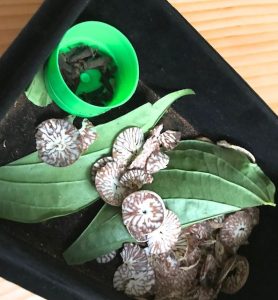
He and I split an order of chicken fried rice before heading back to Male on the ferry. After each meal Mohamed and his friends eat some sort of mint flavored tree bark looking and feeling Maldivian delicacy. It’s called Areca nuts (the small round items above). They had me try it. I thought it tasted like chewing wood chips! They all got a kick out of my comment.
After we got back to Male we had just a brief chance to meet Mohamed’s wife and two-year old daughter. They were at a local restaurant and popped out to say high. What a beautiful young family.
When it was time to come back from Hulhumalé from Male (yes, there was a lot of ferry riding) Tonikey was there to share the ride. In a way I was like a baton in a relay race. The guys in Maldives never dropped the baton. They were always on the phone making sure every part of my Maldivian adventure would go as planned. It did.
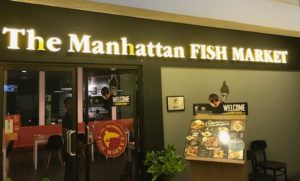
We would wrap up the trip with a final supper at the Manhattan Fish Market. This was reported to be the best restaurant on the island. It was Mohamed, Tonikey and Sanih who joined me for dinner.

The food was great and the company was better. Mohamed surprised me with a beautiful autographed photo book. It included photos of the racing from the Maldives and even a couple of pictures of me visiting the track on Friday. What a wonderful and creative gift. I’ve never received anything like it. Thank you, Mohamed!
From there I bit my final farewell to Mohamed. He had been my main contact. If it were not for him I would never have made it to Maldives. There almost always has to be “that guy”. Mohamed was that guy for Maldives.
There was just enough time to get back to my guest house and shower and change clothes. It would feel good to do that since I would have two flights covering some 20 hours of flying beginning at midnight tonight.
When I was all refreshed Tonikey and Sanih came by to take me to the airport. Motorbikes wouldn’t work for this trip. Tonikey’s brother had a luxurious SUV to make the trip.
Tonikey works at the airport. He knows the ins and out and that made my entire check-in process go smoothly. When I said good-bye to Sanih he insisted on having his picture taken with me. I loved it.
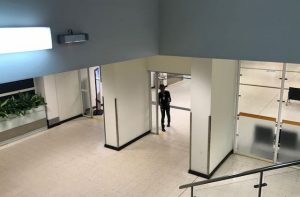
Tonikey was my last good-bye of the night. As I rode up the escalator toward my departure gate I got one last picture of Tonikey waving good-bye. I may never see these fellows again. Regardless of whether I do or not I will always be their friend and will help them in any way I can.
Monday – March 26, 2018
My flight from Male to Hong Kong on Hong Kong Airlines left on time at 12:05 a.m. The heat, humidity and activity of our busy days is tiring. I normally don’t get tired but I am not a heat and humidity person. That’s why I love San Clemente. We don’t have either.
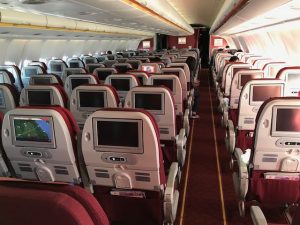
The flight was scheduled for nearly seven hours. The Airbus A330 probably didn’t have thirty passengers on a plane with a capacity of ten times that number. I went to sleep immediately. I don’t even remember our taking off. I slept most of the way and felt great upon landing.
We had landed early giving me nearly three hours before my Hong Kong-Los Angeles flight would depart. That was plenty of time to get nearly three miles of walking in at the huge and beautiful Hong Kong airport.
I must admit I am not a fan of certain Chinese behaviors. Why? They are just about the most aggressive and thoughtless people in an airport and travel environment that I could possibly imagine.
They cut in line. They walk at nearly full speed down the middle of an airline terminal without ever looking up from there phone. They basically dive bomb you from all angles when you are simply walking in a straight line.
I had made a special request to get an aisle seat with an open seat next to me in a row of three. When I got on the plane not only was the middle seat open to my aisle seat but the window seat was unoccupied as well. That meant I would have three seats to lay down in later in the 13-hour flight.
Then about two hours into the flight the Chinese lady in the aisle seat across from me invites her friend to join her in the two open seats next to me! I wasn’t too happy about that. There is an etiquette to flying. They were breaching etiquette.
They feigned speaking no English while I gathered up all of my belongings that I had spread across the two open seats I thought I had. Then the #$^#^& woman had the gall to offer me the aisle seat she had just vacated with passengers in the middle and aisle seat of that three-seat row. She was offering me an aisle seat with a passenger in the middle seat. She had just taken both the middle seat and window seat that I had. Had I accepted her offer that would have left her and her friend with my aisle seat, a window seat and an open middle seat. I literally shouted, “No” to her offer and took my sweet time moving my gear to accommodate her.
Then about an hour later the woman sitting in the middle seat next to me gathered all of her stuff and left the middle seat she so badly wanted. THEN about an hour after that her comes a guy who SWITCHES seats with the woman in the window seat of my row. About two hours after THAT the guy gets up to leave! I asked him on his way out, “Are you done”? He said, “Yes, we’re done”. With that I laid down across all three seats and went to sleep. When I woke up I saw the original woman in the aisle seat across from me back in her seat and eying my row. No way, Jose! I went back to sleep.
No, my travel experiences with Chinese people had not gone well today. This is not the first time I have noticed their aggressive and seemingly clueless behavior in public places. I was talking with a Maldives flight attendant earlier on this trip. He told me the Chinese people were the most difficult to deal with.
Epilogue
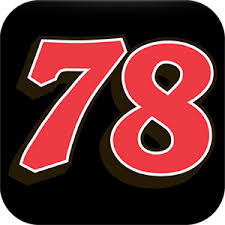
I have now had some 78 foreign country visits. Remember, the U.S. was my first country where I saw racing but obviously to me it is not a foreign country! I cannot recall a single one where I didn’t have a good time. However, there are a few that get a perfect score. I won’t tell you which previous countries achieved that 100% rating. I think they know who they are. Maldives gets a perfect score, a top rating. They joined a few other countries whose hospitality, uniqueness and overall vibe was the best.
Can trackchasing country #80 be far off? I can guarantee you it will be far from San Clemente. I have already travelled more than 71,000 miles during the first three months of 2018. I’d like to take a break but when opportunity comes a knocking I have to answer the door.
I’ve got several irons in the fire. I never know when the next “hit” will come. I have international friends who are just waiting to help. They will not be denied. If they want me to visit their country then I will. Stay tuned right here at www.randylewis.org and you won’t miss a thing.
Thanks for reading about my trackchasing,
Randy Lewis
World’s #1 Trackchaser
Randy is a freelance journalist who winters in San Clemente, California and sometime flies in coach.
And so it goes from country #79, Maldives.
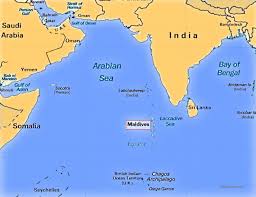
THE COUNTRY LIST
#79!!
RLR – Randy Lewis Racing Lifetime Trackchasing Countries
# 1 – UNITED STATES OF AMERICA – Peoria Speedway – Mt. Hawley (oval) – Track #1, Peoria, Illinois – circa 1955
# 2 – CANADA – Cayuga Speedway (oval) – Track #174, Nelles Corner, Ontario – 1988
# 3 – AUSTRALIA – Parramatta City Raceway (oval) – Track #180, Granville, New South Wales – 1989
# 4 – UNITED KINGDOM – Northhampton International Raceway (oval) – Track #378, Northhampton – 1999
# 5 – NETHERLANDS – Driesum Racetrack (oval) – Track #839, Driesum – 2005
# 6 – BELGIUM – Bellekouter oval (oval) – Track #841, Affligem – 2005
# 7 – FRANCE – Circuit de Croix en Ternois (road course) – Track #843, Saint-Pol sur-Ternoise – 2005
# 8 – GERMANY – Nurburgring (road course) – Track #844, Nurburg – 2005
# 9 – NEW ZEALAND – Western Springs Speedway (oval) – Track #1,134, Western Springs – 2006
# 10 – MEXICO – Triovalo Bernardo Obregon (oval) – Track #1,281, Tiajamulco de Zuniga, Jalisco – 2007
# 11 – BARBADOS – Bushy Park Racing Circuit (road course) – Track #1,296, Bushy Park – 2007
# 12 – THAILAND – Bira Circuit (road course) – Track #1,300, Pattaya – 2008
# 13 – SOUTH AFRICA – Durban Grand Prix (road course) – Track #1,315, Durban, KwaZulu-Natal – 2008
# 14 – JAMAICA – Dover Raceway (road course) – Track #1,322, Brown’s Town St. Ann – 2008
# 15 – SWEDEN – Sturup Raceway (road course) – Track #1,335, Malmo – 2008
# 16 – DENMARK – Ring Djursland (road course) – Track #1,336, Tirstrup – 2008
# 17 – CZECH REPUBLIC – Automotodrome BRNO (road course) – Track #1,381, Brno – 2008
# 18 – AUSTRIA – Lambrechten Stock Car Track (road course) – Track #1,382, Lambrechten – 2008
# 19 – IRELAND – Tipperary International Raceway (oval) – Track #1,388, Rosegreen – 2008
# 20 – GUYANA – South Dakota Circuit (road course) – Track #1,390, Timehri – 2008
# 21 – CHINA – The Guia Circuit (road course) – Track #1,392, Macau – 2008
# 22 – COSTA RICA – Autodromo La Guacima (road course) – Track #1,398, La Guacima – 2008
# 23 – ANDORRA – Grandvalira Circuit (road course) – Track #1,404, Port d’Envalira – 2009
# 24 – ARGENTINA – Circuito Efren Chemolli (oval) – Track #1,406, Buenos Aires – 2009
# 25 – QATAR – Losail International Circuit (road course) – Track #1,408, Doha – 2009
# 26 – BAHRAIN – Bahrain International Circuit (road course) – Track #1,410, Sakhir – 2009
# 27 – UNITED ARAB EMIRATES – Dubai Autodrome (road course) – Track #1,411, Dubai – 2009
# 28 – COLOMBIA – Autodromo de Tocancipa (road course) – Track #1,415, Tocancipa – 2009
# 29 – SPAIN – Motorland Aragon (road course) – Track #1,416, Alcaniz – 2009
# 30 – PORTUGAL – Circuto de Murca (road course) – Track #1,417, Murca – 2009
# 31 – ICELAND – Kapelluhraum (road course) – Track #1,420, Hafnafjorour – 2009
# 32 – HUNGARY – Hungaroring (road course) – Track #1,426, Mogyorod – 2009
# 33 – SWITZERLAND – Hock Ybrig (road course) – Track #1,427, Hoch Ybrig – 2009
# 34 – ITALY – Vighizzolo d’Este Stock Car Track (road course) – Track #1,428, Vighizzolo d’Este – 2009
# 35 – DOMINICAN REPUBLIC – Autodromo Mobil 1 (road course) – Track #1,515, Santo Domingo – 2009
# 36 – MALTA – Ta’Qali Race Track (road course) – Track #1,521, Ta’Qali – 2010
# 37 – FINLAND – Lake Pidisjarvi Ice Track (road course) – Track #1,524, Nivala – 2010
# 38 – JAPAN – Suzuka Circuit (road course) – Track #1,530, Suzuka – 2010
# 39 – CHILE – Autodromo de Interlomas (road course) – Track #1,531, Temuco – 2010
# 40 – MOROCCO – Circuit de Marrakesh (road course) – Track #1,535, Marrakesh – 2010
# 41 – BRAZIL – Circuit de Caruaru – Aryten Senna (road course) – Track #1,540, Caruaru – 2010
# 42 – ESTONIA – Laitse Rally Park (road course) – Track #1,571, Laitse – 2010
# 43 – LATVIA – Bikernieki (road course) – Track #1,572, Riga – 2010
# 44 – GUATEMALA – Autodromo Pedro Cofino (road course) – Track #1,580, Alotenango – 2010
# 45 – EL SALVADOR – El Jabali (road course) – Track #1,582, Quezaltepeque – 2010
# 46 – ROMANIA – Bradu (road course) – Track #1,603, Bradu – 2010
# 47 – BULGARIA – Closed Route – Burgas (road course) – Track #1,604, Burgas – 2010
# 48 – SOUTH KOREA – Korea International Circuit (road course) – Track #1,605, Yeongam, Jeollanam-Do – 2010
# 49 – PHILIPPINES – Batangas Racing Circuit (road course) – Track #1,608, Batangas – 2010
# 50 – NORWAY – Lyngas Motorbane (road course) – Track #1,648, Lier – 2011
# 51 – MALAYSIA – Sepang International Circuit (road course) – Track #1,656, Sepang – 2011
# 52 – INDONESIA – Sentul International Circuit (road course) – Track #1,657, Babakan Madang, Boder – 2011
# 53 – LUXEMBOURG – Alzingen (road course) – Track #1,711, Alzingen – 2011
# 54 – POLAND – Tor Slomczyn (road course) – Track #1,713, Slomczyn – 2011
# 55 – SINGAPORE – Marina Bay (road course) – Track #1,714, Singapore – 2011
# 56 – URUGUAY – Piriapolis Grand Prix (road course) – Track #1,724, Piriapolis – 2011
# 57 – SRI LANKA – Pannala Race Track (road course) – Track #1,732, Pannala – 2012
# 58 – ECUADOR – Autodromo Internacional de Yahuarcocha (road course) – Track #1,736, Ibarra – 2012
# 59 – SLOVAKIA – Slovakia Ring (road course) – Track #1,745, Orechova Poten – 2012
# 60 – MONACO – Circuit de Monaco (road course) – Track #1,747, Monte Carlo – 2012
# 61 – CROATIA – Automotodrom Drobnik (road course) – Track #1,762, Rijeka – 2012
# 62 – PERU – Autodromo La Chutana (road course) – Track #1,802, Lima – 2012
# 63 – GREECE – Serres Circuit (road course) – Track #1,807, Serres – 2012
# 64 –RUSSIA – Moscow Central Hippodrome (oval) – Track #1,824, Moscow – 2013
# 65 –LITHUANIA – Marijampole Autocross Track (road course) – Track #1,842, Marijampole – 2013
# 66 –INDIA – Buddh International Circuit (road course) – Track #1,915, Noida – 2013
# 67 –GEORGIA – Rustavi International Motorpark (road course) – Track #1,916, Rustavi – 2013
# 68 –TRINIDAD AND TOBAGO – Larry Gomes Stadium (road course) – Track #1,928, Arima – 2014
# 69 – TURKEY – Istanbul Park (road course) – Track #2,035 Akfirat – 2014
# 70 – AZERBAIJAN – Streets of Baku (road course) – Track #2,037, Baku – 2014
# 71 – SERBIA – Usce (road course) – Track #2,224, Belgrade – 2016
# 72 – BOSNIA AND HERZEGOVNIA – Zaluzani (road course) – Track #2,235, Banja Luka – 2016
# 73 – PANAMA – Circuito Internacional de Panama (road course) – Track #2,290, La Chorrera – 2016
# 74 – ZIMBABWE – Bulawayo Motorsports Park (road course) – Track #2,291, Bulawayo – 2016
# 75 – NAMIBIA – Desert Raceway (oval) – Track #2,369, Walvis Bay – 2017
# 76 – MACEDONIA – Skopje Street Course (road course) – Track #2,386, Skopje – 2017
# 77 – UKRAINE – Autodrome Chayka (road course) – Track #2,387, Kiev – 2017
# 78 – BELARUS – Stadium Zarya (oval) – Track #2,421, Minsk – 2018
# 79 – MALDIVES – Hulhumalé Racing Track (road course) – Track #2,425, Hulhumalé – 2018
The International Big 3.
- . Randy Lewis, San Clemente, California USA – 79
- . Roland Vanden Eynde, Vilvoorde, Belgium – 52
- . Carol Lewis, San Clemente, California USA – 42
It should be noted that this week I saw racing in my 15th Asian country. The next leading trackchaser has six Asian countries…and that’s Carol. When I first started doing this I never could have imagined how it would turn out.
LIFETIME TRACKCHASER COMPARISONS
The three most important trackchasing comparisons to me are:
Total lifetime tracks seen
Total “trackchasing countries” seen
Lifetime National Geographic Diversity results
Total Lifetime Tracks
There are no trackchasers currently within 640 tracks of my lifetime total. Don’t blame me.
- . Randy Lewis, San Clemente, California – 2,425
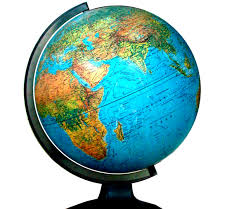
Total Trackchasing Countries
There are no trackchasers currently within 25 countries of my lifetime total.
- . Randy Lewis, San Clemente, California – 79
Current lifetime National Geographic Diversity results
- Randy Lewis, San Clemente, California – 4.47
Maldives – FAST FACTS*
Provided by my friends at Wikipedia
The Maldives, officially the Republic of Maldives, is a South Asian island country, located in the Indian Ocean, situated in the Arabian Sea. It lies southwest of Sri Lanka and India. The chain of 26 atolls stretches from Ihavandhippolhu Atoll in the north to the Addu City in the south. Comprising a territory spanning roughly 298 square kilometres (115 sq mi), the Maldives is one of the world’s most geographically dispersed countries, as well as the smallest Asian country by both land area and population, with around 427,756 inhabitants. Malé is the capital and most populated city, traditionally called the “King’s Island” for its central location.
Introduction
With an average ground-level elevation of 1.5 metres (4 ft 11 in) above sea level, it is the world’s lowest country, with even its highest natural point being the lowest in the world, at 2.4 metres (7 ft 10 in). Due to the consequent risks posed by rising sea-levels, the government pledged in 2009 to make the Maldives a carbon-neutral country by 2019.
The Maldivian archipelago took to Islam in the 12th century and consolidated as a sultanate, developing strong commercial and cultural ties with Asia and Africa. From the mid 16th-century, the region came under the increasing influence of European colonial powers, with the Maldives becoming a British protectorate in 1887. Independence from the United Kingdom was achieved in 1965 and a presidential republic was established in 1968 with an elected People’s Majlis. The ensuing decades have been characterized by political instability, efforts at democratic reform, and environmental challenges posed by climate change
The Maldives is a founding member of the South Asian Association for Regional Cooperation (SAARC). It is also a member of the United Nations, the Organization of Islamic Cooperation, and the Non Aligned Movement. The World Bank classifies the Maldives as having an upper middle income economy. Fishing has historically been the dominant economic activity, and remains the largest sector by far, followed by the rapidly growing tourism industry. Along with Sri Lanka, it is one of only two South Asian countries rated “high” on the Human Development Index, with its per capita income one of the highest among SAARC nations.
The Maldives was a Commonwealth republic from July 1982 until its withdrawal from the Commonwealth in October 2016 in protest of international criticism of its records in relation to corruption and human rights.
History
Ancient history and settlement
The first Maldivians did not leave any archaeological artifacts. Their buildings were probably built of wood, palm fronds and other perishable materials, which would have quickly decayed in the salt and wind of the tropical climate. Moreover, chiefs or headmen did not reside in elaborate stone palaces, nor did their religion require the construction of large temples or compounds.
Buddhist period
Despite being just mentioned briefly in most history books, the 1,400-year-long Buddhist period has a foundational importance in the history of the Maldives. It was during this period that the culture of the Maldives as we now know it both developed and flourished. The Maldivian language, the first Maldives scripts, the architecture, the ruling institutions, the customs and manners of the Maldivians originated at the time when the Maldives were a Buddhist kingdom.
Buddhism probably spread to the Maldives in the 3rd century BC at the time of Emperor Ashoka’s expansion, and became the dominant religion of the people of the Maldives until the 12th century AD. The ancient Maldivian Kings promoted Buddhism, and the first Maldives writings and artistic achievements, in the form of highly developed sculpture and architecture, are from that period. Nearly all archaeological remains in the Maldives are from Buddhist stupas and monasteries, and all artifacts found to date display characteristic Buddhist iconography.
Islamic period
The importance of the Somalis as traders in the Indian Ocean by the 12th century may partly explain why the last Buddhist king of Maldives Dhovemi converted to Islam in the year 1153 (or 1193), adopting the Muslim title of Sultan Muhammad al Adil, and initiating a series of six Islamic dynasties that lasted until 1932 when the sultanate became elective. The formal title of the Sultan up to 1965 was, Sultan of Land and Sea, Lord of the twelve-thousand islands and Sultan of the Maldives which came with the style Highness.
The person who was responsible of converting the Maldives population into Islam was Yusuf bin Ahmad al-Kawneyn a very famous Somali saint. In the Maldives, he is called Saint Abu Barakat al Barbari (“blessed father of Somalia”) and whose religious name was Shaykh Yusuf al Kawneyn. He is also credited with spreading Islam in the islands, establishing the Hukuru Miskiiy Mosque, and converting the Maldivian population into Islam. Ibn Batuta states the Maldivian king was converted by Abu Al Barakat Al Berber (“blessed father of Somalia”). The Shaikh reportedly converted the islands into Islam by convincing the local King, Sultan Mohammed Al Adil, after having subdued Ranna Maari, a demon coming from the sea.
Colonial period
In 1558 the Portuguese established a small garrison with a Viador (Viyazoru), or overseer of a factory (trading post) in the Maldives, which they administered from their main colony in Goa. Their attempts to impose Christianity provoked a local revolt led by Muhammad Thakurufaanu Al-Azam and his two brothers, that fifteen years later drove the Portuguese out of Maldives. This event is now commemorated as National Day. In the mid-17th century, the Dutch, who had replaced the Portuguese as the dominant power in Ceylon, established hegemony over Maldivian affairs without involving themselves directly in local matters, which were governed according to centuries-old Islamic customs.
The British expelled the Dutch from Ceylon in 1796 and included Maldives as a British protected area. The status of Maldives as a British protectorate was officially recorded in an 1887 agreement in which the sultan accepted British influence over Maldivian external relations and defense while retaining home rule, which continued to be regulated by Muslim traditional institutions in exchange for an annual tribute. The status of the islands was akin to other British protectorates in the Indian Ocean region, including Zanzibar and the Trucial States.
Maldives remained a British crown protectorate until 1953 when the sultanate was suspended and the First Republic was declared under the short-lived presidency of Muhammad Amin Didi. While serving as prime minister during the 1940s, Didi nationalized the fish export industry. As president he is remembered as a reformer of the education system and a promoter of women’s rights. Muslim conservatives in Malé eventually ousted his government, and during a riot over food shortages, Didi was beaten by a mob and died on a nearby island.
Beginning in the 1950s, the political history in Maldives was largely influenced by the British military presence in the islands. In 1954 the restoration of the sultanate perpetuated the rule of the past. Two years later, the United Kingdom obtained permission to reestablish its wartime RAF Gan airfield in the southernmost Addu Atoll, employing hundreds of locals. In 1957, however, the new prime minister, Ibrahim Nasir, called for a review of the agreement. Nasir was challenged in 1959 by a local secessionist movement in the three southernmost atolls that benefited economically from the British presence on Gan. This group cut ties with the Maldives government and formed an independent state, the United Suvadive Republic with Abdullah Afif as president and Hithadhoo as capital. One year later the Suvadive republic was scrapped after Nasir sent gunboats from Malé with government police, and Abdulla Afif went into exile. Meanwhile, in 1960 the Maldives had allowed the United Kingdom to continue to use both the Gan and the Hitaddu facilities for a thirty-year period, with the payment of £750,000 over the period of 1960 to 1965 for the purpose of Maldives’ economic development. The base was closed in 1976 as part of the larger British withdrawal of permanently stationed forces ‘East of Suez’.
Independence and republic
In line with the broader British policy of decolonization on 26 July 1965 an agreement was signed on behalf of His Majesty the Sultan by Ibrahim Nasir Rannabandeyri Kilegefan, Prime Minister, and on behalf of Her Majesty The Queen by Sir Michael Walker, British Ambassador designate to the Maldives Islands, which ended the British responsibility for the defense and external affairs of the Maldives. The islands thus achieved full political independence, with the ceremony taking place at the British High Commissioner’s Residence in Colombo. After this, the sultanate continued for another three years under Muhammad Fareed Didi, who declared himself King rather than Sultan.
On 15 November 1967, a vote was taken in parliament to decide whether the Maldives should continue as a constitutional monarchy or become a republic. Of the 44 members of parliament, forty voted in favour of a republic. On 15 March 1968, a national referendum was held on the question, and 93.34% of those taking part voted in favour of establishing a republic. The republic was declared on 11 November 1968, thus ending the 853-year-old monarchy, which was replaced by a republic under the presidency of Ibrahim Nasir. As the King had held little real power, this was seen as a cosmetic change and required few alterations in the structures of government.
Tourism began to be developed on the archipelago by the beginning of the 1970s. The first resort in the Maldives was Kurumba Maldives which welcomed the first guests on 3 October 1972. The first accurate census was held in December 1977 and showed 142,832 persons residing in Maldives. Political infighting during the ’70s between Nasir’s faction and other political figures led to the 1975 arrest and exile of elected prime minister Ahmed Zaki to a remote atoll. Economic decline followed the closure of the British airfield at Gan and the collapse of the market for dried fish, an important export. With support for his administration faltering, Nasir fled to Singapore in 1978, with millions of dollars from the treasury.
Maumoon Abdul Gayoom began his 30-year role as President in 1978, winning six consecutive elections without opposition. His election was seen as ushering in a period of political stability and economic development in view of Gayoom’s priority to develop the poorer islands. Tourism flourished and increased foreign contact spurred development. However, Gayoom’s rule was controversial, with some critics saying Gayoom was an autocrat who quelled dissent by limiting freedoms and political favouritism.
A series of coup attempts (in 1980, 1983, and 1988) by Nasir supporters and business interests tried to topple the government without success. While the first two attempts met with little success, the 1988 coup attempt involved a roughly 80-person mercenary force of the PLOTE who seized the airport and caused Gayoom to flee from house to house until the intervention of 1600 Indian troops airlifted into Malé restored order.
A November 1988 coup was headed by Muhammadu Ibrahim Lutfee, a small-businessman. On the night of 3 November 1988, the Indian Air Force airlifted a parachute battalion group from Agra and flew them over 2,000 kilometres (1,200 mi) to the Maldives. The Indian paratroopers landed at Hulule and secured the airfield and restored the government rule at Malé within hours. The brief operation, labelled Operation Cactus, also involved the Indian Navy.
21st century
On 26 December 2004, following the 2004 Indian Ocean earthquake, the Maldives were devastated by a tsunami. Only nine islands were reported to have escaped any flooding, while fifty-seven islands faced serious damage to critical infrastructure, fourteen islands had to be totally evacuated, and six islands were destroyed. A further twenty-one resort islands were forced to close because of tsunami damage.
The total damage was estimated at more than US$400 million, or some 62% of the GDP. 102 Maldivians and 6 foreigners reportedly died in the tsunami. The destructive impact of the waves on the low-lying islands was mitigated by the fact there was no continental shelf or land mass upon which the waves could gain height. The tallest waves were reported to be 14 feet (4.3 m) high
In 2008 a new constitution was approved and the first direct presidential elections occurred, which were won by Mohamed Nasheed in the second round. His administration faced many challenges, including the huge debt left by the previous government, the economic downturn following the 2004 tsunami, overspending (by means of overprinting of local currency rufiyaa), unemployment, corruption, and increasing drug use. Taxation on goods was imposed for the first time in the country, and import duties were reduced in many goods and services. Social welfare benefits were given to those aged 65 years or older, single parents, and those with special needs.
Social and political unrest grew in late 2011, following opposition campaigns in the name of protecting Islam. Nasheed controversially resigned from office after large number of police and army mutinied in February 2012. Nasheed’s vice president, Mohammed Waheed Hassan, was sworn in as President. Nasheed was later arrested, convicted of terrorism, and sentenced to 13 years. The trial was widely seen as flawed and political. The UN Working Group on Arbitrary Detention called for Nasheed’s immediate release.
The elections in late 2013 were highly contested. Former president Mohammed Nasheed won the most votes in the first round, but the Supreme Court annulled it despite the positive assessment of international election observers. In the re-run vote Abdulla Yameen, half-brother of the former president Gayoom, assumed the presidency. Yameen introduced increased engagement with China, and promoted a policy of connecting Islam with anti-Western rhetoric.
Yameen survived an assassination attempt in late 2015. Vice president Ahmed Adeeb was later arrested together with 17 supporters for “public order offences” and the government instituted a broader crackdown against political dissent. A state of emergency was later declared ahead of a planned anti-government rally, and the people’s Majlis accelerated the removal of Vice president Ahmed Adeeb.
Though the popular image of the Maldives is that of a holiday paradise, its radicalized youths are enlisting in significant numbers to fight for ISIL militants in the Middle East.
On February 3, 2018, Parliament dissolved and the military occupied the capital. On February 5, the supreme court of Maldives released three imprisoned opposition leaders, including former President Mohammed Nasheed. The court also provided relief to 12 ministers who had been removed from President Abdullah Yameen’s ruling party. Yameen refused to comply with the court order and imposed a state of emergency to last for 15 days. Protesters demonstrated on the streets against President Abdullah Yemen after the announcement of the emergency.
Geography
The Maldives consists of 1,192 coral islands grouped in a double chain of 26 atolls, along the north-south direction, spread over roughly 90,000 square kilometres (35,000 sq mi), making this one of the world’s most dispersed countries. It lies between latitudes 1°S and 8°N, and longitudes 72° and 74°E. The atolls are composed of live coral reefs and sand bars, situated atop a submarine ridge 960 kilometres (600 mi) long that rises abruptly from the depths of the Indian Ocean and runs north to south.
Maldives is the lowest country in the world, with maximum and average natural ground levels of only 2.4 metres (7 ft 10 in) and 1.5 metres (4 ft 11 in) above sea level, respectively. In areas where construction exists, however, this has been increased to several metres. More than 80 per cent of the country’s land is composed of coral islands which rise less than one metre above sea level. As a result, the Maldives are at high risk of being submerged due to rising sea levels. The UN’s environmental panel has warned that, at current rates, sea level rise would be high enough to make the Maldives uninhabitable by 2100.
Climate
The Maldives has a tropical monsoon climate (Am) under the Köppen climate classification, which is affected by the large landmass of South Asia to the north. The presence of this landmass causes differential heating of land and water. These factors set off a rush of moisture-rich air from the Indian Ocean over South Asia, resulting in the southwest monsoon. Two seasons dominate Maldives’ weather: the dry season associated with the winter northeastern monsoon and the rainy season which brings strong winds and storms.
The shift from the dry northeast monsoon to the moist southwest monsoon occurs during April and May. During this period, the southwest winds contribute to the formation of the southwest monsoon, which reaches Maldives in the beginning of June and lasts until the end of August. However, the weather patterns of Maldives do not always conform to the monsoon patterns of South Asia. The annual rainfall averages 254 centimetres (100 in) in the north and 381 centimetres (150 in) in the south.
The monsoonal influence is greater in the north of the Maldives than in the south, more influenced by the equatorial currents.
|
Climate data for Malé (1981–2010) |
|||||||||||||
| Month | Jan | Feb | Mar | Apr | May | Jun | Jul | Aug | Sep | Oct | Nov | Dec | Year |
| Average high °C (°F) | 30.3
(86.5) |
30.7
(87.3) |
31.4
(88.5) |
31.6
(88.9) |
31.2
(88.2) |
30.6
(87.1) |
30.5
(86.9) |
30.4
(86.7) |
30.2
(86.4) |
30.2
(86.4) |
30.1
(86.2) |
30.1
(86.2) |
30.61
(87.11) |
| Daily mean °C (°F) | 28.0
(82.4) |
28.3
(82.9) |
28.9
(84) |
29.2
(84.6) |
28.8
(83.8) |
28.3
(82.9) |
28.2
(82.8) |
28.0
(82.4) |
27.8
(82) |
27.8
(82) |
27.7
(81.9) |
27.8
(82) |
28.2
(82.8) |
| Average low °C (°F) | 25.7
(78.3) |
25.9
(78.6) |
26.4
(79.5) |
26.8
(80.2) |
26.3
(79.3) |
26.0
(78.8) |
25.8
(78.4) |
25.5
(77.9) |
25.3
(77.5) |
25.4
(77.7) |
25.2
(77.4) |
25.4
(77.7) |
25.8
(78.4) |
| Average rainfall mm (inches) | 114.2
(4.496) |
38.1
(1.5) |
73.9
(2.909) |
122.5
(4.823) |
218.9
(8.618) |
167.3
(6.587) |
149.9
(5.902) |
175.5
(6.909) |
199.0
(7.835) |
194.2
(7.646) |
231.1
(9.098) |
216.8
(8.535) |
1,901.4
(74.858) |
| Average precipitation days (≥ 1.0 mm) | 6 | 3 | 5 | 9 | 15 | 13 | 12 | 13 | 15 | 15 | 13 | 12 | 131 |
| Average relative humidity (%) | 78.0 | 77.0 | 76.9 | 78.1 | 80.8 | 80.7 | 79.1 | 80.5 | 81.0 | 81.7 | 82.2 | 80.9 | 79.7 |
| Mean monthly sunshine hours | 248.4 | 257.8 | 279.6 | 246.8 | 223.2 | 202.3 | 226.6 | 211.5 | 200.4 | 234.8 | 226.1 | 220.7 | 2,778.2 |
| Source #1: World Meteorological Organization[64] | |||||||||||||
| Source #2: NOAA (relative humidity and sun 1961–1990)[65] | |||||||||||||
Environmental issues
The Intergovernmental Panel on Climate Change’s 2007 report predicted the upper limit of the sea level rises will be 59 centimetres (23 in) by 2100, which means that most of the republic’s 200 inhabited islands may need to be abandoned. One study appears to show that the sea level in the Maldives dropped 20–30 centimetres (8–12 in) throughout the 1970s and ’80s, although later studies failed to back this up. The observed rate of sea level rise is only 1.7–1.8 millimetres per year.
According to former Maldivian president Mohamed Nasheed, the Maldives are ranked the third most endangered nation due to flooding from climate change. In March and April 2012, Nasheed stated, “If carbon emissions were to stop today, the planet would not see a difference for 60 to 70 years.” “If carbon emissions continue at the rate they are climbing today, my country will be under water in seven years.” He called for more climate change mitigation action while on the American television shows The Daily Show[70] and the Late Show with David Letterman. This opinion was disputed in 2012, when the next President said: “The good news is that Maldives is not about to disappear….on the basis of technical and scientific information that we have, that we will be able to manage climate change in the Maldives and prolong the life for the islands and for our life on these islands.”
In November 2008, President Mohamed Nasheed announced plans to look into purchasing new land in India, Sri Lanka, and Australia because of his concerns about global warming, and the possibility of much of the islands being inundated with water from rising sea levels. The purchase of land will be made from a fund generated by tourism. The President has explained his intentions: “We do not want to leave the Maldives, but we also do not want to be climate refugees living in tents for decades”. On 22 April 2008, then President Maumoon Abdul Gayoom pleaded for a cut in global greenhouse gas emissions, warning that rising sea levels could submerge the island nation of Maldives.
By 2020, Maldives plans to eliminate or offset all of its greenhouse gas emissions. At the 2009 International Climate Talks, President Mohamed Nasheed explained that:
For us swearing off fossil fuels is not only the right thing to do, it is in our economic self-interest… Pioneering countries will free themselves from the unpredictable price of foreign oil; they will capitalize on the new green economy of the future, and they will enhance their moral standing giving them greater political influence on the world stage.
Other environmental issues include bad waste disposal and beach theft. Although the Maldives are kept relatively pristine and little litter can be found on the islands, no good waste disposal sites exist. Most trash from Male and other resorts is simply dumped at Thilafushi.
Marine ecosystem
The Maldives have a range of different habitats including deep sea, shallow coast, and reef ecosystems, fringing mangroves, wetlands and dry land. There are 187 species of coral forming the coral reefs. This area of the Indian Ocean, alone, houses 1100 species of fish, 5 species of sea turtle, 21 species of whale and dolphin, 400 species of mollusc, and 83 species of echinoderms. The area is also populated by a number of crustacean species: 120 copepod, 15 amphipod, as well as more than 145 crab and 48 shrimp species.
Among the many marine families represented are Pufferfish, Fusiliers, Jackfish, Lionfish, Oriental Sweetlips, reef sharks, Groupers, Eels, Snappers, Bannerfish, Batfish, Humphead Wrasse, Spotted Eagle Rays, Scorpionfish, Lobsters, Nudibranches, Angelfish, Butterflyfish, Squirrelfish, Soldierfish, Glassfish, Surgeonfish, Unicornfish, Triggerfish, Napoleon wrasses, and Barracudas.
These coral reefs are home to a variety of marine ecosystems that vary from planktonic organisms to whale sharks. Sponges have gained importance as five species have displayed anti-tumor and anti-cancer properties.
In 1998, sea-temperature warming of as much as 5 °C (9.0 °F) due to a single El Niño phenomenon event caused coral bleaching, killing two-thirds of the nation’s coral reefs.
In an effort to induce the regrowth of the reefs, scientists placed electrified cones anywhere from 20–60 feet (6.1–18.3 m) below the surface to provide a substrate for larval coral attachment. In 2004, scientists witnessed corals regenerating. Corals began to eject pink-orange eggs and sperm. The growth of these electrified corals was five times faster than untreated corals. Scientist Azeez Hakim stated:
before 1998, we never thought that this reef would die. We had always taken for granted that these animals would be there, that this reef would be there forever.
Again, in 2016, the coral reefs of the Maldives experienced a severe bleaching incident. Up to 95% of coral around some islands have died, and, even after six months, 100% of young coral transplants died. The surface water temperatures reached an all-time high in 2016, at 31 degrees Celsius in May.
Government
Maldives is a presidential republic, with the President as head of government and head of state. The President heads the executive branch and appoints the cabinet which is approved by the People’s Majlis (Parliament). Following the introduction of a new constitution in 2008, direct elections for the President take place every five years, with a limit of two terms in office for any individual. The current President is Abdulla Yameen.
The republican constitution came into force in 1968, and was amended in 1970, 1972, and 1975. On 27 November 1997 it was replaced by another Constitution assented to by the President Gayoom. This Constitution came into force on 1 January 1998. All stated that the president was the Head of State, Head of Government and the Commander-in-Chief of the Armed Forces and the Police of the Maldives. A third Constitution was ratified in 2008, which separated the judiciary from the head of state.
In 2018, tensions with opposition and subsequent crackdown was termed as an “Assault on democracy” by the UN Human Rights chief.
Law
According to the Constitution of Maldives, “the judges are independent, and subject only to the Constitution and the law. When deciding matters on which the Constitution or the law is silent, judges must consider Islamic Shari’ah”. Article 15 of the Act Number 1/81 (Penal Code) gives provision for hudud punishments. Article 156 of the constitution states that law includes the norms and provisions of sharia.
Islam is the official religion of the Maldives and open practice of any other religion is forbidden and liable to prosecution. Article 2 of the revised constitution says that the republic “is based on the principles of Islam”. Article nine says that “a non-Muslim may not become a citizen”; article ten says that “no law contrary to any principle of Islam can be applied”. Article nineteen states that “citizens are free to participate in or carry out any activity that is not expressly prohibited by sharia [Islamic law] or by the law”.
The requirement to adhere to a particular religion and prohibition of public worship following other religions is contrary to Article 18 of the Universal Declaration of Human Rights and Article 18 of the International Covenant on Civil and Political Rights to which Maldives has recently become party and was addressed in Maldives’ reservation in adhering to the Covenant claiming that “The application of the principles set out in Article 18 of the Covenant shall be without prejudice to the Constitution of the Republic of the Maldives.”
Human rights
Human rights in the Maldives is a contentious issue. In its 2011 Freedom in the World report, Freedom House declared the Maldives “Partly Free”, claiming a reform process which had made headway in 2009 and 2010 had stalled. The United States Bureau of Democracy, Human Rights and Labor claims in their 2012 report on human rights practices in the country that the most significant problems are corruption, lack of religious freedom, and abuse and unequal treatment of women. In February 2013, the court sentenced a 15-year-old rape victim to 100 lashes and 8 months of house arrest for having had extra-marital relations. The conviction was based on the confession of the girl shortly after being raped by her stepfather Same-sex relations are illegal in the Maldives.
Military
The Maldives National Defence Force is the combined security organisation responsible for defending the security and sovereignty of the Maldives, having the primary task of being responsible for attending to all internal and external security needs of the Maldives, including the protection of the Exclusive Economic Zone (EEZ) and the maintenance of peace and security. The MNDF component branches are the Coast Guard, Marine Corps, Special Forces, Service Corps and the Corps of Engineers.
As a water-bound nation much of the security concerns lie at sea. Almost 99% of the country is covered by sea and the remaining 1% land is scattered over an area of 800 km (497 mi) × 120 km (75 mi), with the largest island being not more than 8 km2 (3 sq mi). Therefore, the duties assigned to the MNDF of maintaining surveillance over Maldives’ waters and providing protection against foreign intruders poaching in the EEZ and territorial waters, are immense tasks from both logistical and economic viewpoints.
Administrative divisions
The Maldives has twenty-six natural atolls and few island groups on isolated reefs, all of which have been divided into twenty-one administrative divisions (19 administrative atolls and cities of Malé and Addu).
Economy
In ancient times the Maldives were renowned for cowry shells, coir rope, dried tuna fish (Maldives Fish), ambergris (Maavaharu), and coco de mer (Tavakkaashi). Local and foreign trading ships used to load these products in Sri Lanka and transport them to other harbours in the Indian Ocean.
Historically Maldives provided enormous quantities of cowry shells, an international currency of the early ages. From the 2nd century AD the islands were known as the ‘Money Isles’ by the Arabs. Monetaria moneta were used for centuries as a currency in Africa, and huge amounts of Maldivian cowries were introduced into Africa by western nations during the period of trade. The cowry is now the symbol of the Maldives Monetary Authority.
The Maldivian government began an economic reform programme in 1989, initially by lifting import quotas and opening some exports to the private sector. Subsequently, it has liberalized regulations to allow more foreign investment. Real GDP growth averaged over 7.5% per year for more than a decade. Today, the Maldives’ largest industry is tourism, accounting for 28% of GDP and more than 60% of the Maldives’ foreign exchange receipts. Fishing is the second leading sector.
The Maldivian economy is to a large degree based on tourism. In late December 2004, the major tsunami left more than 100 dead, 12,000 displaced, and property damage exceeding $400 million. As a result of the tsunami, the GDP contracted by about 3.6% in 2005. A rebound in tourism, post-tsunami reconstruction, and development of new resorts helped the economy recover quickly and showed an 18% increase on 2006. 2013 estimates show Maldivians enjoy the highest GDP (PPP) per capita $11,900 (2013 est) among south Asian countries.
Agriculture and manufacturing continue to play a lesser role in the economy, constrained by the limited availability of cultivable land and the shortage of domestic labour. Tourism gave a major boost to the country’s fledgling traditional cottage industries such as mat weaving, lacquer work, handicraft, and coir rope making. New industries that have since emerged include printing, production of PVC pipes, brick making, marine engine repairs, bottling of aerated water, and garment production.
Tourism
The Maldives remained largely unknown to tourists until the early 1970s. Only 185 islands are home to its 300,000 inhabitants. The other islands are used entirely for economic purposes, of which tourism and agriculture are the most dominant. Tourism accounts for 28% of the GDP and more than 60% of the Maldives’ foreign exchange receipts. Over 90% of government tax revenue comes from import duties and tourism-related taxes.
The development of tourism fostered the overall growth of the country’s economy. It created direct and indirect employment and income generation opportunities in other related industries. The first tourist resorts were opened in 1972 with Bandos island resort and Kurumba Village (the current name is Kurumba Maldives), which transformed the Maldives economy.
According to the Ministry of Tourism, the emergence of tourism in 1972 transformed the economy, moving rapidly from dependence on fisheries to tourism. In just three and a half decades, the industry became the main source of income. Tourism was also the country’s biggest foreign currency earner and the single largest contributor to the GDP. As of 2008, 89 resorts in the Maldives offered over 17,000 beds and hosted over 600,000 tourists annually.
The number of resorts increased from 2 to 92 between 1972 and 2007. As of 2007, over 8,380,000 tourists had visited Maldives.
Visitors to the Maldives do not need to apply for a visa pre-arrival, regardless of their country of origin, provided they have a valid passport, proof of onward travel, and the money to be self-sufficient while in the country.
Most visitors arrive at Malé International Airport, on Hulhulé Island, adjacent to the capital Malé. The airport is served by flights to and from India, Sri Lanka, Doha, Dubai, Singapore, Istanbul, and major airports in South-East Asia, as well as charters from Europe. Gan Airport, on the southern atoll of Addu, also serves an international flight to Milan several times a week. British Airways offers direct flights to the Maldives around 2–3 times per week.
Fishing industry
For many centuries the Maldivian economy was entirely dependent on fishing and other marine products. Fishing remains the main occupation of the people and the government gives priority to the fisheries sector.
The mechanization of the traditional fishing boat called dhoni in 1974 was a major milestone in the development of the fisheries industry. A fish canning plant was installed on Felivaru in 1977, as a joint venture with a Japanese firm. In 1979, a Fisheries Advisory Board was set up with the mandate of advising the government on policy guidelines for the overall development of the fisheries sector. Manpower development programmes began in the early 1980s, and fisheries education was incorporated into the school curriculum. Fish aggregating devices and navigational aids were located at various strategic points. Moreover, the opening up of the exclusive economic zone (EEZ) of the Maldives for fisheries has further enhanced the growth of the fisheries sector.
As of 2010, fisheries contributed over 15% of the country’s GDP and engaged about 30% of the country’s work force. Fisheries were also the second-largest foreign exchange earner after tourism.
Demographics
The largest ethnic group are Dhivehis, native to the historic region of the Maldives Islands comprising today’s Republic of Maldives and the island of Minicoy in Union territory of Lakshadweep, India. They share the same culture and speak the Dhivehi language. They are principally an Indo-Aryan people, closely related to the Sinhalese and having traces of Middle Eastern, South Asian, Austronesian and African genes in the population.
In the past there was also a small Tamil population known as the Giraavaru people. This group have now been almost completely absorbed into the larger Maldivian society but were once native to the island of Giraavaru (Kaafu Atoll). This island was evacuated in 1968 due to heavy erosion of the island.
Some social stratification exists on the islands. It is not rigid, since rank is based on varied factors, including occupation, wealth, Islamic virtue, and family ties. Instead of a complex caste system, there was merely a distinction between noble (bēfulhu) and common people in the Maldives. Members of the social elite are concentrated in Malé.
The population doubled by 1978, and the population growth rate peaked at 3.4% in 1985. At the 2006 census, the population had reached 298,968, although the census in 2000 showed that the population growth rate had declined to 1.9%. Life expectancy at birth stood at 46 years in 1978, and later rose to 72. Infant mortality has declined from 12.7% in 1977 to 1.2% today, and adult literacy reached 99%. Combined school enrolment reached the high 90s. The population was projected to have reached 317,280 in 2010.
As of April 2008, more than 70,000 foreign employees, along with 33,000 illegal immigrants, comprised more than one third of the Maldivian population. There are 40,000 Bangladeshis in the Maldives, making them the largest group of foreigners working in that country. Other immigrants include Filipinos in the Maldives as well as various Western expatriates.
Religion
After the long Buddhist period of Maldivian history, Muslim traders introduced Islam. Maldivians converted to Islam by the mid-12th century. The islands have had a long history of Sufic orders, as can be seen in the history of the country such as the building of tombs. They were used until as recently as the 1980s for seeking the help of buried saints. They can be seen next to some old mosques and are considered a part of Maldives’s cultural heritage.
Other aspects of tassawuf, such as ritualised dhikr ceremonies called Maulūdu (Mawlid)—the liturgy of which included recitations and certain supplications in a melodical tone—existed until very recent times. These Maulūdu festivals were held in ornate tents specially built for the occasion. At present Islam is the official religion of the entire population, as adherence to it is required for citizenship.
According to Moroccan traveller Ibn Battuta, the person responsible for this conversion was a Sunni Muslim visitor named Abu al-Barakat, sailing from Morocco. He is also referred to as Tabrizugefaanu. His venerated tomb now stands on the grounds of the Friday Mosque, or Hukuru Miskiy, in Malé. Built in 1656, this is the country’s oldest mosque.
Languages
The official and common language is Dhivehi, an Indo-Aryan language having some similarities with Elu, the ancient Sinhalese language. The first known script used to write Dhivehi is Eveyla akuru script which is found in historical recording of kings (raadhavalhi). Later a script called Dhives akuru was used for a long period. The present-day script is called Thaana and is written from right to left. Thaana is said to have been introduced by the reign of Mohamed Thakurufaanu.
English is widely spoken by the locals of Maldives.
Population by locality
|
Largest localities in Maldives by registered population as of July 4, 2012 |
|||||
| Rank | Name | Division | Pop. | ||
| 1 | Malé | Malé | 103,693 | Fuvahmulah
Kulhudhuffushi |
|
| 2 | Addu City | Addu Atoll | 31,999 | ||
| 3 | Fuvahmulah | Gnaviyani Atoll | 11,857 | ||
| 4 | Kulhudhuffushi | Haa Dhaalu | 8,974 | ||
| 5 | Thinadhoo | Gaafu Dhaalu | 7,108 | ||
| 6 | Naifaru | Lhaviyani | 5,133 | ||
| 7 | Hinnavaru | Lhaviyani | 4,676 | ||
| 8 | Gan | Laamu | 4,385 | ||
| 9 | Dhuvaafaru | Raa | 4,368 | ||
| 10 | Dhidhdhoo | Haa Alifu | 3,848 | ||
Culture
Since the 12th century AD there were also influences from Arabia in the language and culture of the Maldives because of the conversion to Islam and its location as a crossroads in the central Indian Ocean. This was due to the long trading history between the far east and the middle east. Somali travellers discovered the island for gold in the 13th century, before the Portuguese. Their brief stay later ended in a bloody conflict known by the Somalis as “Dagaal Diig Badaaney” in 1424.
However, unlike the Sinhalese of Sri Lanka and most of the Arabs, Africans and Europeans whose influence can be seen in borrow-words, material culture, and the diversity of Maldivian phenotype, Maldivians do not have the highly embedded patriarchal codes of honour, purity, corporate marriage, and sedentary private property that are typical of places where agriculture is the key form of subsistence and social relations have been built, historically, around tribute taking.
Reflective of this is the fact that the Maldives has had the highest national divorce rate in the world for many decades. This, it is hypothesized, is due to a combination of liberal Islamic rules about divorce and the relatively loose marital bonds that have been identified as common in non- and semi-sedentary peoples without a history of fully developed agrarian property and kinship relations.
Transportation
Velana International Airport is the principal gateway to the Maldives. International travel is available on a number of major airlines. Two Maldives based airlines also operate international flights. Privately owned MEGA Maldives Airlines has Boeing 737 and 767 aircraft and operates frequent services to Beijing, Shanghai, and Hong Kong. Government owned Island Aviation Services (branded as Maldivian) operates to nearly all Maldives domestic airports with several Bombardier Dash 8 aircraft and one A320 with international service to Chennai and Thiruvananthapuram, India, and Dhaka, Bangladesh.
In Maldives there are three main ways to travel between islands: by domestic flight, by seaplane or by boat. For several years there were two seaplane companies operating: TMA (Trans Maldivian Airways and Maldivian Air Taxi, but these merged in 2013 under the name TMA. The seaplane fleet is entirely made up of DHC-6 Twin Otters. There is also another airline, Flyme, which operates using ATR planes to domestic airports, principally Maamagili and some others.
The typical Maldivian boat is called a dhoni. Depending on the distance of the destination island from the airport, resorts organise domestic flight plus boat transfers, seaplane flights directly to the resort island jetty, or speedboat trips for their guests. There are also locally run ferries using large dhoni boats. Speedboats and seaplanes tend to be more expensive, while travel by dhoni, although slower, is relatively cheaper and convenient.
Education
The Maldives National University is one of the country’s three institutions of higher education. Its mission statement is as follows:
To create, discover, preserve and disseminate knowledge that are necessary to enhance the lives and livelihoods of people and essential for the cultural, social and economic development of the society so that this nation shall remain free and Islamic forever.
In 1973, the Allied Health Services Training Centre (the forerunner of the Faculty of Health Sciences) was established by the Ministry of Health. The Vocational Training Centre was established in 1974, providing training for mechanical and electrical trades. In 1984, the Institute for Teacher Education was created and the School of Hotel and Catering Services was established in 1987 to provide trained personnel for the tourist industry. In 1991, the Institute of Management and Administration was created to train staff for public and private services. In 1998, the Maldives College of Higher Education was founded. The Institute of Shar’ah and Law was founded in January 1999. In 2000 the college launched its first degree programme: Bachelor of Arts. On 17 January 2011 the Maldives National University Act was passed by the President of the Maldives; The Maldives National University was named on 15 February 2011.
